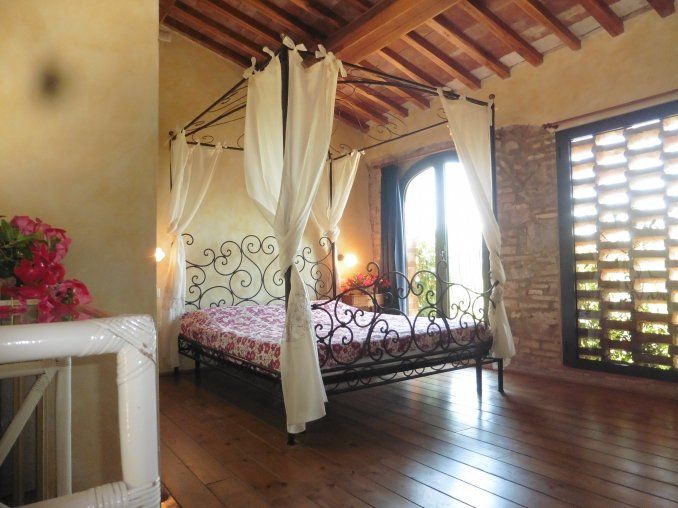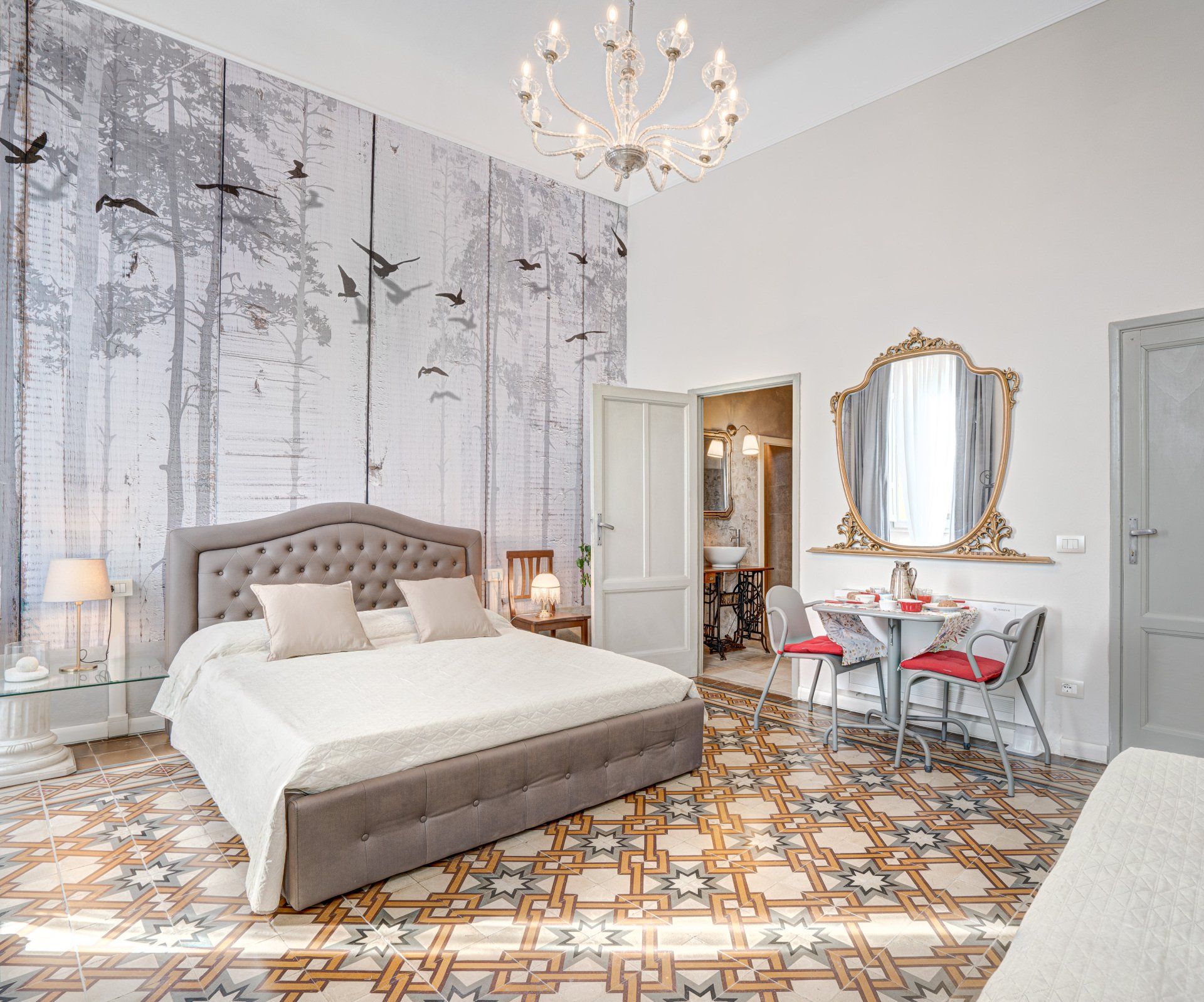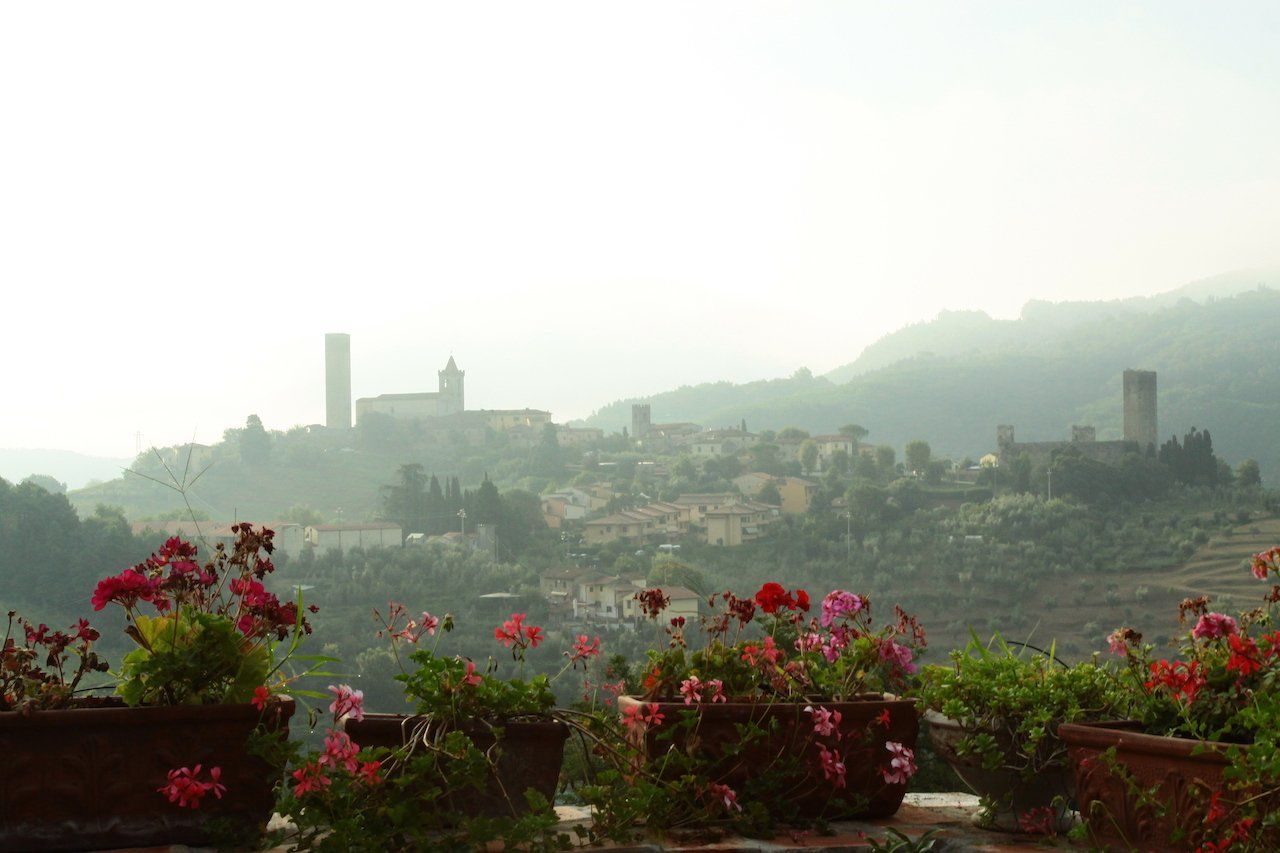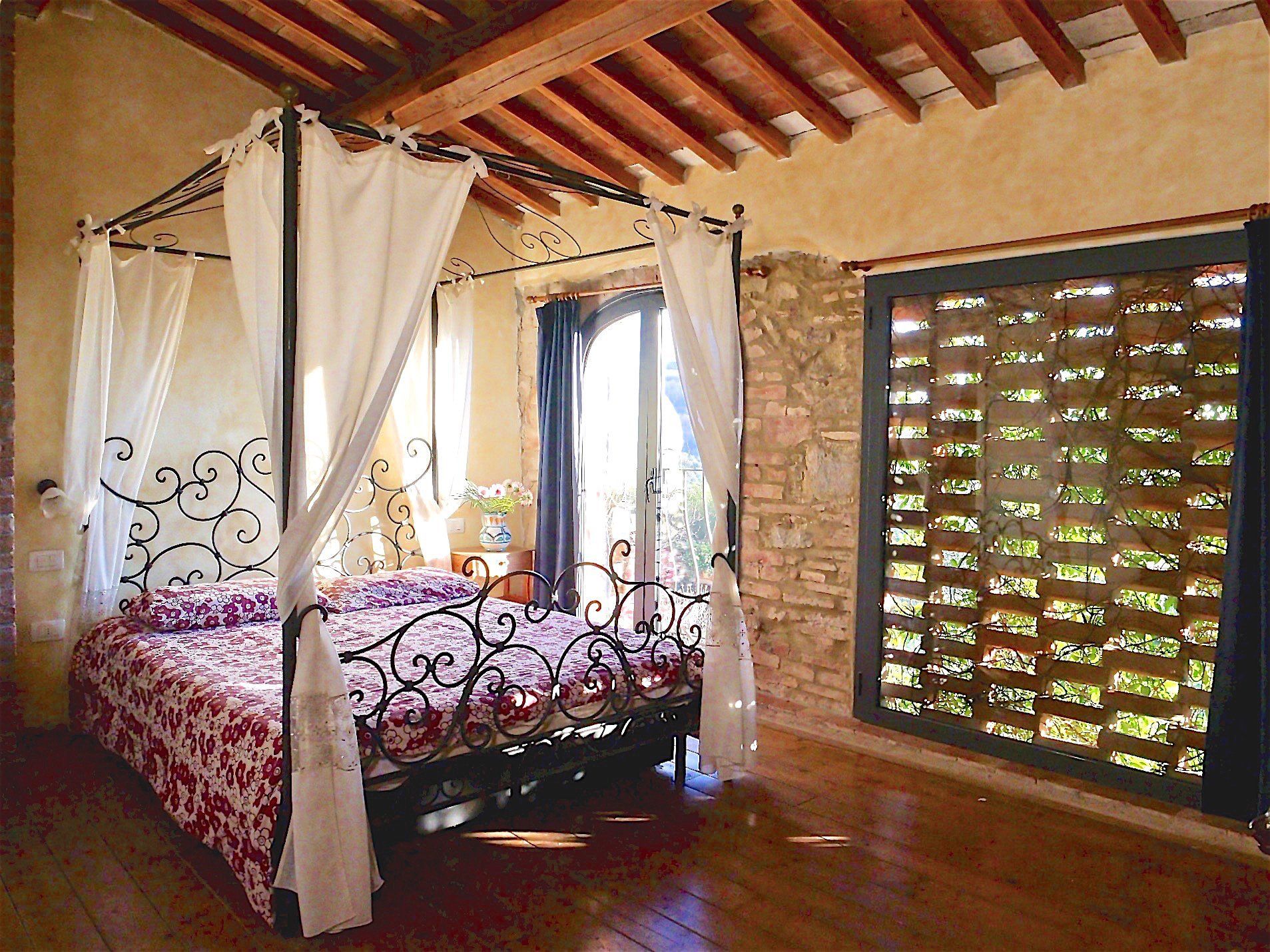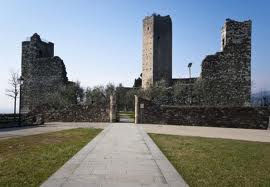
Slide title
Scrivi qui la tua didascaliaButtonSlide title
Scrivi qui la tua didascaliaButton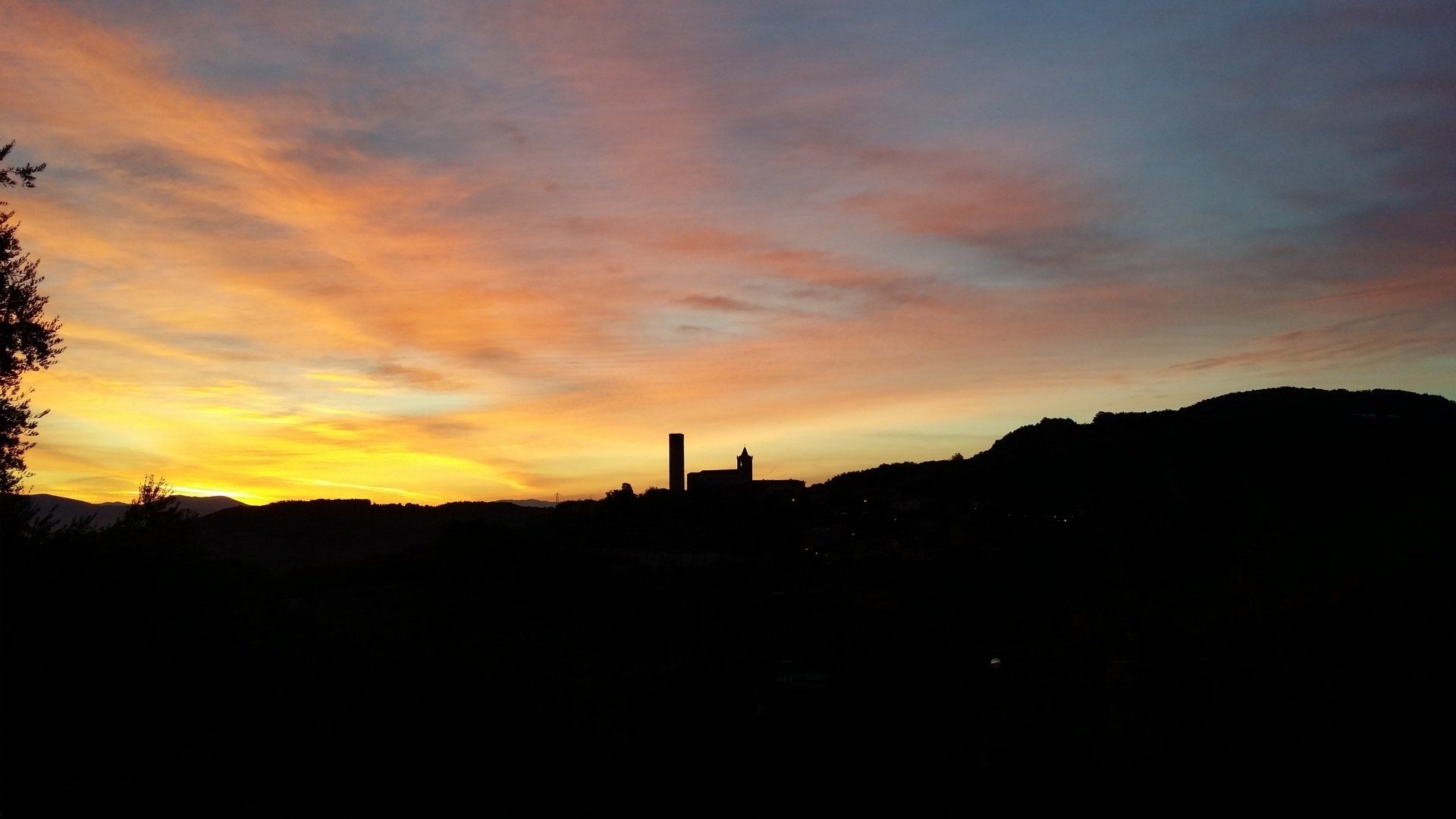
Slide title
Scrivi qui la tua didascaliaButton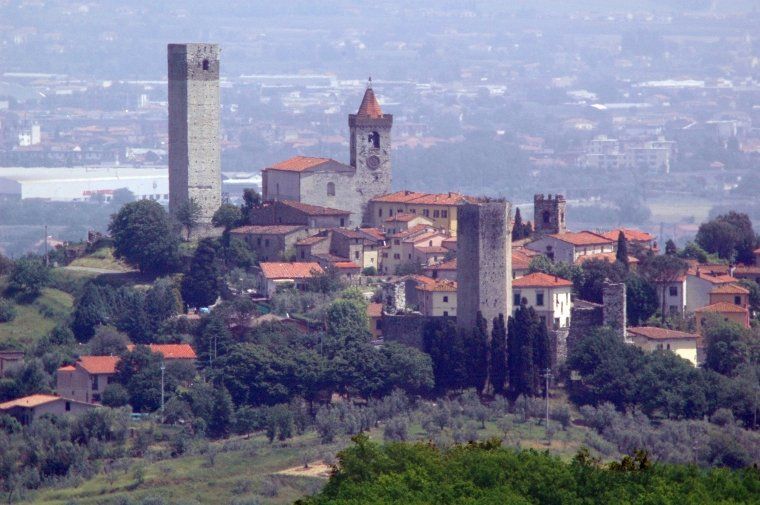
Slide title
Scrivi qui la tua didascaliaButton
-
Serravalle Pistoiese - Where the Agriturismo I Pitti is located
The village of Serravalle Pistoiese is located about 1 km from Agriturismo I Pitti, and it can be reached by a short walk along the dirt road that leads to the farmhouse.
It's a small village nestled on the gentle slopes of Montalbano in a natural setting of vibrant and harmonious appearance. These lands lack certain references to the Roman and early medieval ages, but we know that the Cassia road, in the Lucca - Pistoia stretch, as it crossed the Montalbano range, definitely passed through the Serravalle pass.
The birth of the village is linked to its role in controlling the roads and guarding the border between the Ombrone valley and the Nievole valley.
The Serravalle castle seems to have gained particular prominence from the mid-12th century, when its strategic position attracted the interest of the nearby city of Pistoia. For its own interests, Pistoia fortified it with walls and earthworks. These interventions led to the construction of a fortress on the highest point of the hill, of which only the tall and imposing tower called the Barbarossa remains today. This tower is 45 meters high and played a strategic role in spotting enemy armies coming from Lucca and the sea. Interesting regulations for its surveillance are found in the 12th-century statutes, underscoring the importance of the tower's role as a stronghold and watchtower. The appointed guardian responsible for its surveillance was chosen from Pistoia citizens of relatively high status, and during the four months of their duty, they could not leave the tower. The entrance was locked from the outside, and no constructions could be built in the surrounding space.
However, it was during the Late Middle Ages that Serravalle Pistoiese became a decisive object of contention for the power struggles of the main actors in Tuscan geopolitics: Pistoia, Lucca, and Florence battled for control, each leaving their mark. The Torre del Barbarossa was countered by the Rocca Nuova, also known as Castruccio's fortress, established shortly after the siege of 1302 led by Florentine and Lucchese troops under the command of General Moroello Malaspina. The fortress was overtaken after a three-month siege, and it is said that, upon their return from a failed attack on Pistoia, the two armies sought to punish Serravalle for supporting the white faction of the Guelfs in Pistoia. However, they were stopped by Saint Ludovico, the patron saint of the village, who appeared on the castle walls in a luminous cloud. The mighty fortress, which would become the symbol of the village, was completed by Uguccione della Faggiola and later by the condottiero Castruccio Castracani, who erected the imposing hexagonal guard tower.
With the death of the condottiero in 1328, Florentines and Pistoians alternated in controlling the pass until its final submission to Florence. From 1351, Serravalle remained relatively secluded until recent years, only experiencing sporadic military events.
The centrality of the village is also connected to the Via Francigena, which led pilgrims from Pistoia to Altopascio and passed through this castle and the village that still encloses two treasures: the Church of San Michele and that of Santo Stefano. Inside the Church of San Michele, there are parts of an interesting fresco from the early decades of the 14th century depicting the "miracle of the fishbone" of Saint Blaise, as well as a gold triptych with the Madonna on a throne and the Child among the saints Hippolytus, James, Michael, and Stephen, dated 1439 and attributed to Bartolomeo di Andrea Bocchi. In the Church of Santo Stefano, there are glazed terracotta statues of Saint Ludovico of Toulouse, the patron saint of the village, and Saint Anthony Abbot, created by Buglioni and belonging to the school of Giovanni Della Robbia. According to legend, Ludovico of Toulouse, in gratitude for the charity received from the villagers, saved the village in 1306 by appearing on the castle walls in a luminous cloud, deterring the approaching Lucchese militias on the brink of launching a decisive assault. Celebrations in his honor enliven the second half of August every year: on August 19th, the stucco and papier-mâché statue of the saint, kept on the side altar in the Church of Santo Stefano, is carried in a procession through the village.
A masterpiece of late 14th-century Pistoian painting, known to Serravalle's inhabitants as the "house of figures," the Oratory of the Assumption of the Virgin is a compact building that has changed its 14th-century identity over the centuries. After 1789, following the suppression of religious companies and oratories mandated by the bishop of Pistoia, Scipione de' Ricci, the building was used as a civil residence and divided into four rooms arranged on two floors. Hidden for centuries under the plaster of a house, it was rediscovered in the late 1980s when some sacred images emerged. Restoration brought to light a vast cycle of frescoes, including scenes like the Passion of Christ, the Last Judgment, and the Crucifixion, partially attributable to the Giottesque school, which cover all four walls of the Oratory, although many parts have unfortunately been lost.
Serravalle Pistoiese - A brief history of the village where the Agriturismo i Pitti is located
24/10/2025
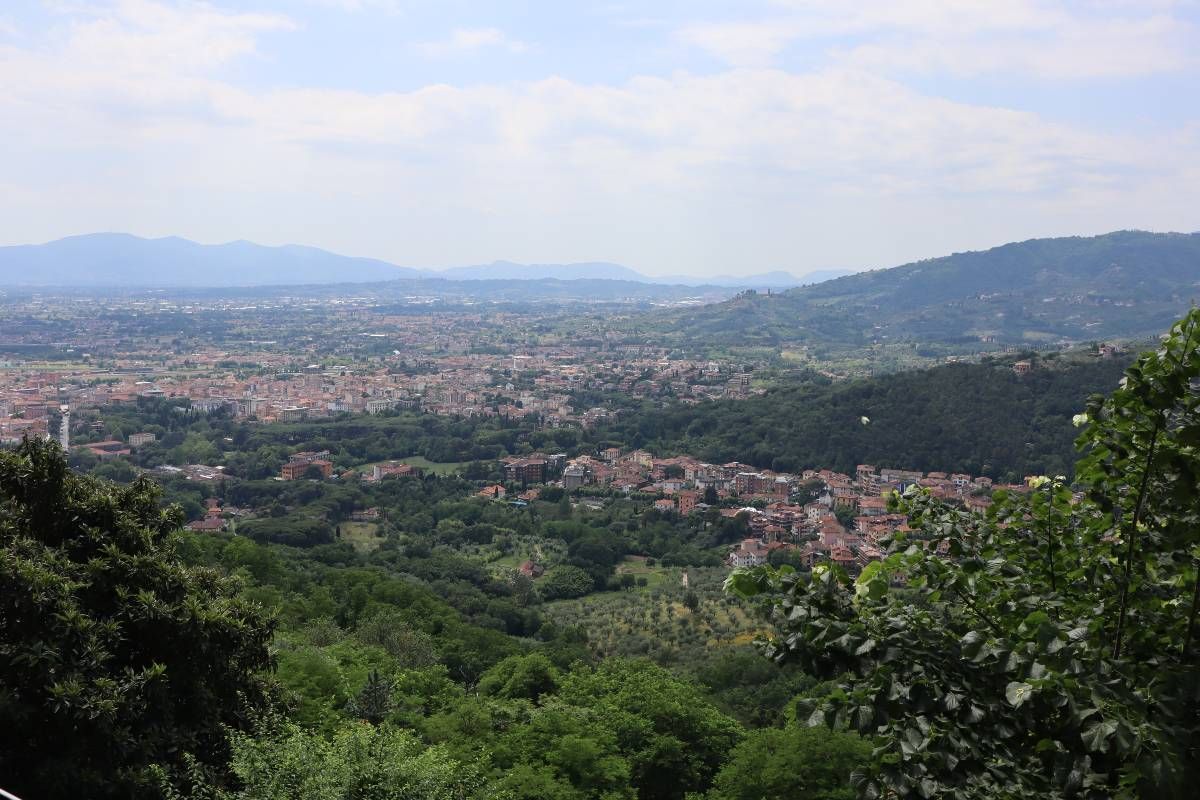
Titolo diapositiva
Scrivi qui la tua didascaliaPulsante
-
The Valdinievole
The territory that can be seen east of Serravalle is called Valdinievole, although it appears more like a plain set between hills whose profiles at the other end of the plain cannot be seen on hazy days.
The Nievole Valley is characterised by three principal zones: the first is mountainous, with some peaks reaching 1.000 metres in height, the second formed of hilly country and the third derived from an area of lakes and swamps. Very probably this last area, with its stagnant waters that caused the atmospheric phenomenon of persistent fogs, may have given the Nievole Valley its name, which means the “Valley of the Mists”. The continuous floods from the swampy areas made the climate of the plain particularly unhealthy, therefore not encouraging the creation of settlements. The towns in fact were more or less forced to to grow up in the hilly areas that close off the entire area into the east and north west. The mountain and hilltop towns of Pontito, Vellano, Buggiano, Uzzano, Massa, Cozzile, Marliana, Montecatini, Monsummano, Serravalle, Larciano, etc, therefore grew up to offer the local population a safe refuge. We can in fact still find traces in the mountain areas of the fortifications of the many castles that were built over the years, whose defensive system, covering the entire territory, was designed to keep them in close contact with each other. The first works to reclaim the marshy areas, thus regulating the anthropical settlement of the Nievole Valley, were started in the 16th century by the Medici family, whose idea was to use the newly drained land for agriculture. This reclaiming work continued off and on until the mid 18th century, when the Lorraine family, who had succeeded the Medici, gave life to more extensive works that included the general improvement of the entire area and the transfer of the Grand Ducal farms. These alterations radically changed the aspect of the Nievole Valley. The great watershed, that on one hand was once an important source of economic support and a useful waterway to reach the sea, but on the other hand had facilitated the spread of malaria, was notably reduced, thus creating the conditions we can find today.
The rich water supplies in the area are also linked to the presence of the hot springs whose therapeutic qualities have been known since antiquity. Spas like Monsummano and Montecatini, where the construction of the thermal baths was started in the second half
of the 18th century at the desire of the Grand Duke Pietro Leopoldo of Lorraine, are closely connected to the knowledge and use of these waters.
The Valdinievole
24/10/2025
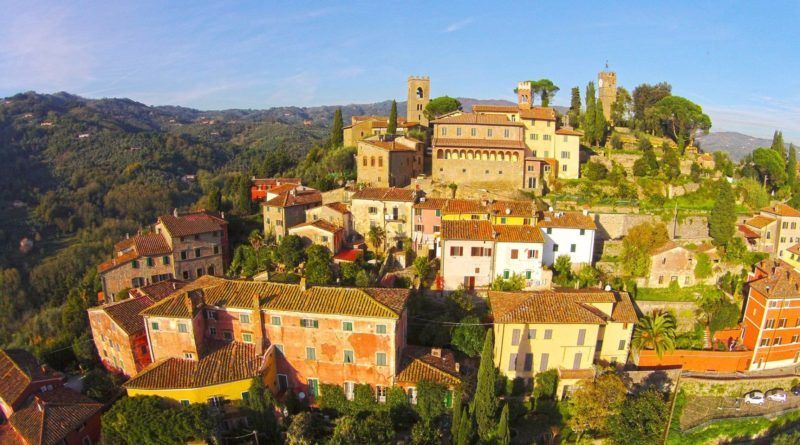
Titolo diapositiva
Scrivi qui la tua didascaliaPulsante
-
Buggiano Castello
Buggiano Castello is one of the most beautiful villages in the Valdinievole region, intimate, quiet, exclusive, and very picturesque with its colorful buildings painted in the characteristic Buggiano Red.
Take a stroll through the narrow streets, still bearing names related to events and atmospheric phenomena such as Via del Vento (Wind Street) and Via del Sole (Sun Street), or explore Via di Sopra (Upper Street), Via di Sotto (Lower Street), or Via di Mezzo (Middle Street).
Ascend the "salitone" (steepy uphill), along Via Umberto I, and as a reward for the challenging climb, you'll reach the beautiful Piazza Pretorio, known as the "living room of Italy" for its intimate atmosphere.
The Palazzo Pretorio, an example of thirteenth-century civil architecture, boasts a stone façade adorned with elegant openings on the first floor and decorated with 57 coats of arms of the podestà of Buggiano, some of which are exquisite glazed terracotta creations from the Della Robbia workshop.
On the square, you will find the Church of Santa Maria della Salute and Nicolao, which offers a breathtaking panorama of the Cessana stream valley. Inside, numerous artworks from the Middle Ages to the Baroque period are preserved, including a 13th-century marble baptismal font and ambo, crafted by the master Lanfranco from Como, a wooden crucifix from the 14th century, and paintings by Florentine artists belonging to the early 15th-century international Gothic style.
The church, founded in 1038 as a Benedictine monastery, features a simple Romanesque architecture made of sandstone and an impressive bell tower whose sound gets lost among the streets of the village and beyond, towards the hills.
The Rocca, located at the highest point of the village, was part of the defensive structure of the castle and consists of a ruined tower and the clock tower with a mechanism dating back to 1510.
Another highly interesting attraction in Buggiano Castello is Villa Sermolli, now a hotel, with a beautiful garden that can be visited and a splendid terrace overlooking the Valdinievole, where you can enjoy a dinner or admire the landscape while sipping an aperitif. The garden of Villa Sermolli is a prime example of the gardens integrated within the city walls, born from the medieval tradition of the monks' "hortus conclusus," which fills the streets with the scent of citrus fruits.
Initially, it was the outdoor spaces beyond the city walls that were cultivated. However, the need for easy access to aromatic herbs and vegetables for daily use led to the cultivation of gardens within the walls. Today, vegetables, fruit trees like walnuts and figs, mulberry trees, olives, as well as ornamental plants with marvelous blooms, take center stage on the terraces.
Throughout the village, nature becomes an accomplice to a unique microclimate. Here, the southern exposure caresses every corner of the village, creating an ideal environment for the luxuriant growth of citrus fruits and plants that crave abundant sunshine, mild temperatures, protection from cold winds, and the right amount of water. In this enchanting blend, every terrace on the hill, no matter how small, becomes a thriving oasis where plants flourish in a jubilee of colors and fragrances.
These gardens, every two years during the last weekend of May, are open to the public, allowing everyone to enjoy a slice of paradise.
24/10/2025
Cutigliano Breve storia e descrizione
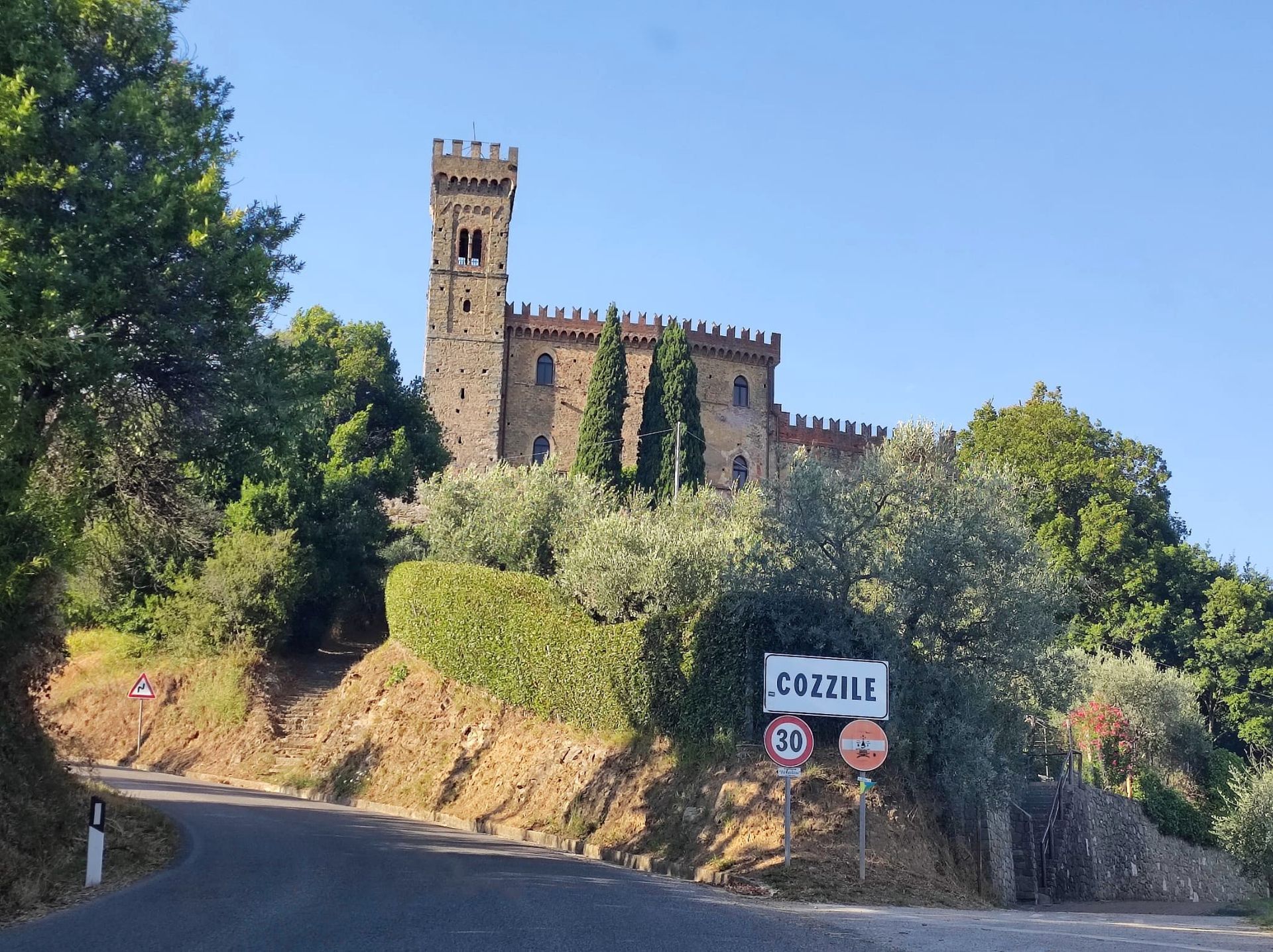
Titolo diapositiva
Scrivi qui la tua didascaliaPulsante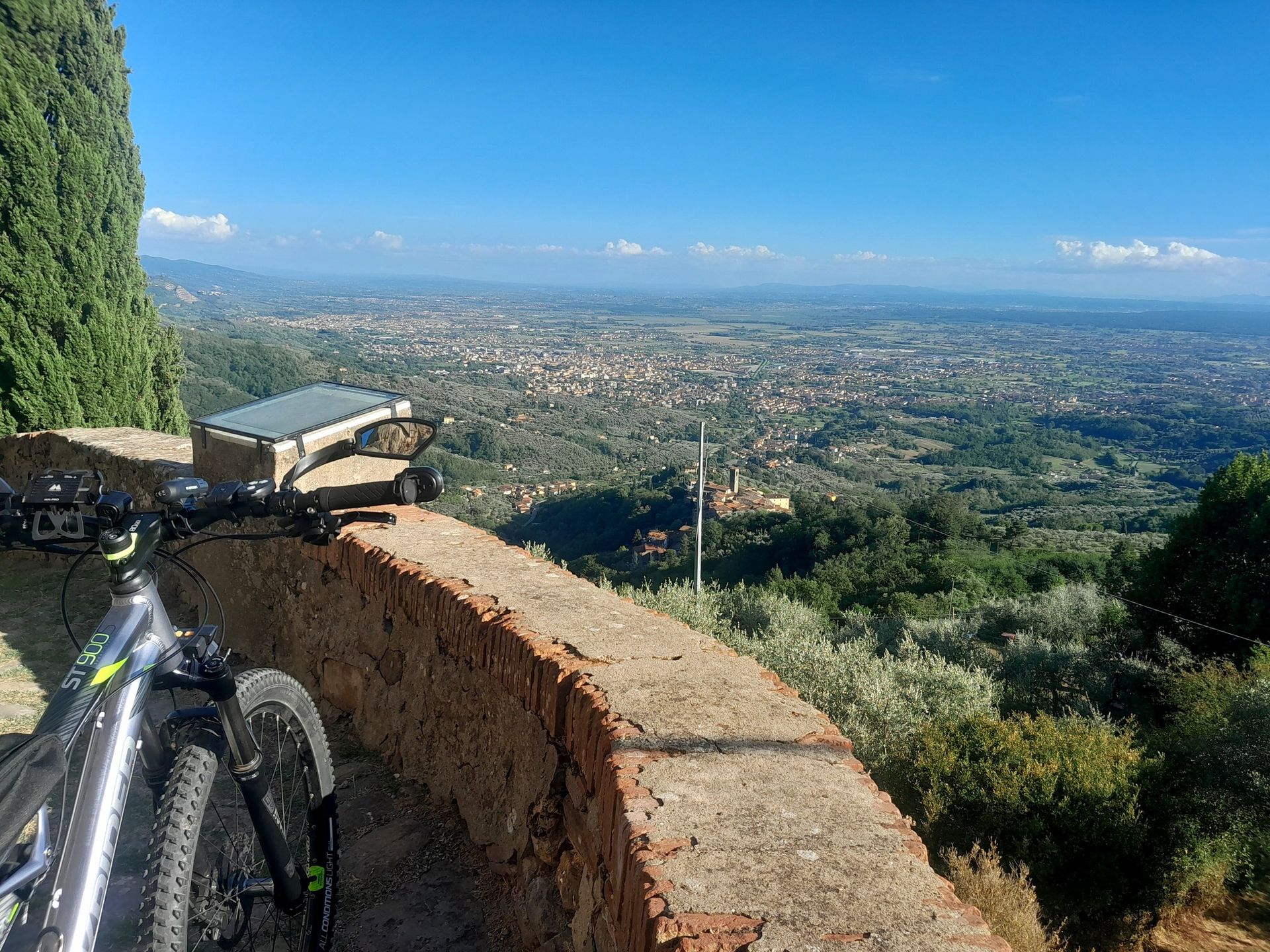
Titolo diapositiva
Scrivi qui la tua didascaliaPulsante
Titolo diapositiva
Scrivi qui la tua didascaliaPulsante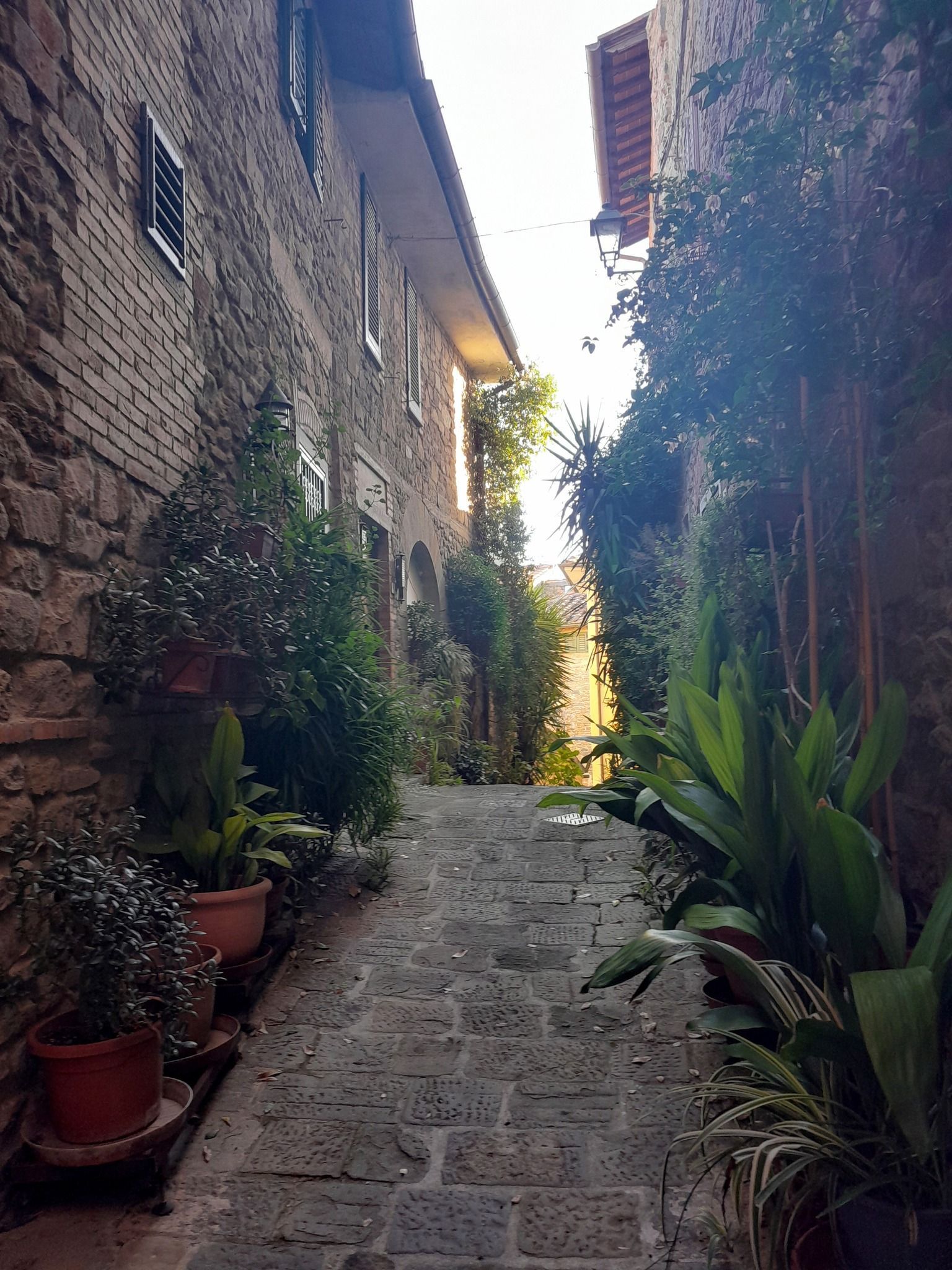
Titolo diapositiva
Scrivi qui la tua didascaliaPulsante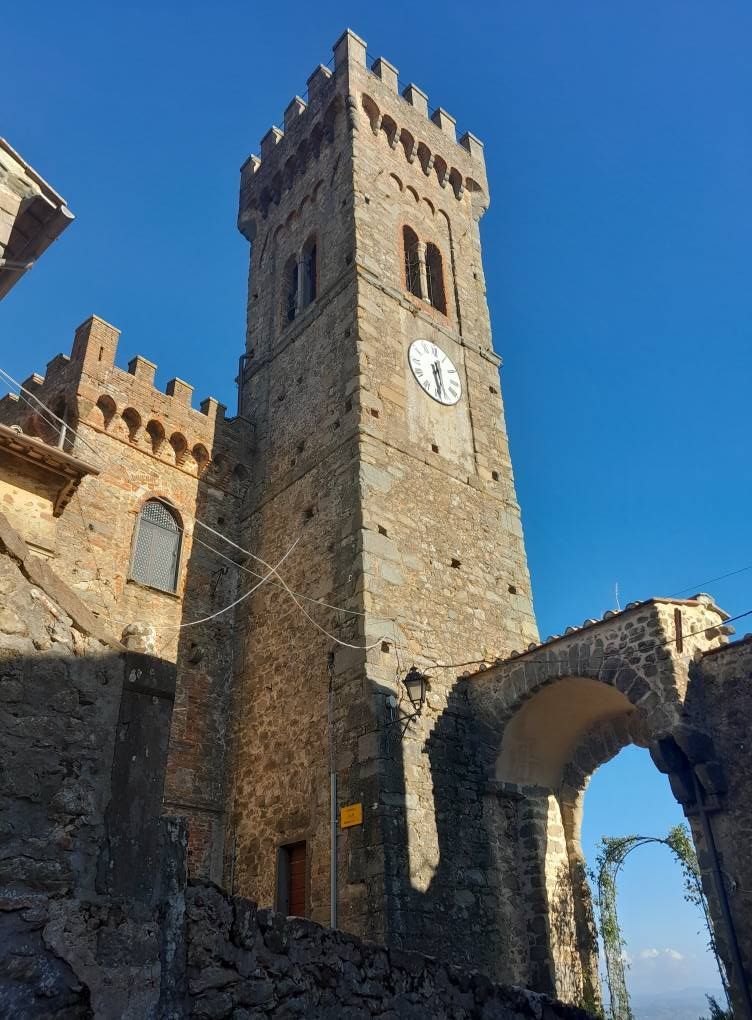
Titolo diapositiva
Scrivi qui la tua didascaliaPulsante
-
Cozzile
The main street of the castle, acting as the backbone of the village, runs between two rows of medieval houses, creating a fascinating atmosphere that takes visitors back in time. At the end of the main road stands the Church of St. James the Apostle, originally Romanesque in design and rebuilt and enlarged in the 16th century, which still preserves valuable works of sacred art.
Right next to the church rises the impressive Palazzo De Gubernatis, once a noble residence, overlooking the valley from a panoramic position. Its Renaissance architecture and strategic location bear witness to the importance the village held in past centuries.
From Porta Nuova, visitors can enjoy a breathtaking view over the entire Valdinievole. On clear days, the dark silhouettes of the Elba Island mountains can be seen in the distance.
The village of Cozzile, probably of Lombard origin, was once owned by the powerful Cadolingi family, later by the Guidi Counts, and finally by the Republic of Florence. Today, it still retains the appearance of a fortified village, with its medieval walls, towers incorporated into the houses, and the characteristic gates of access.
Walking through its cobbled alleys, one encounters picturesque corners, stone arches, coats of arms on facades, and small squares that preserve the memory of its glorious past. Several nature trails start from Cozzile, leading through the surrounding hills, among olive groves and woods—making it an ideal destination not only for history and art lovers but also for those seeking peace and a closer connection with nature.
Today, Cozzile together with Massa forms the municipality of Massa e Cozzile, a hidden gem in the heart of the Valdinievole, where the charm of medieval Tuscany blends with the beauty of unique landscapes.
4/9/2025
Cozzile
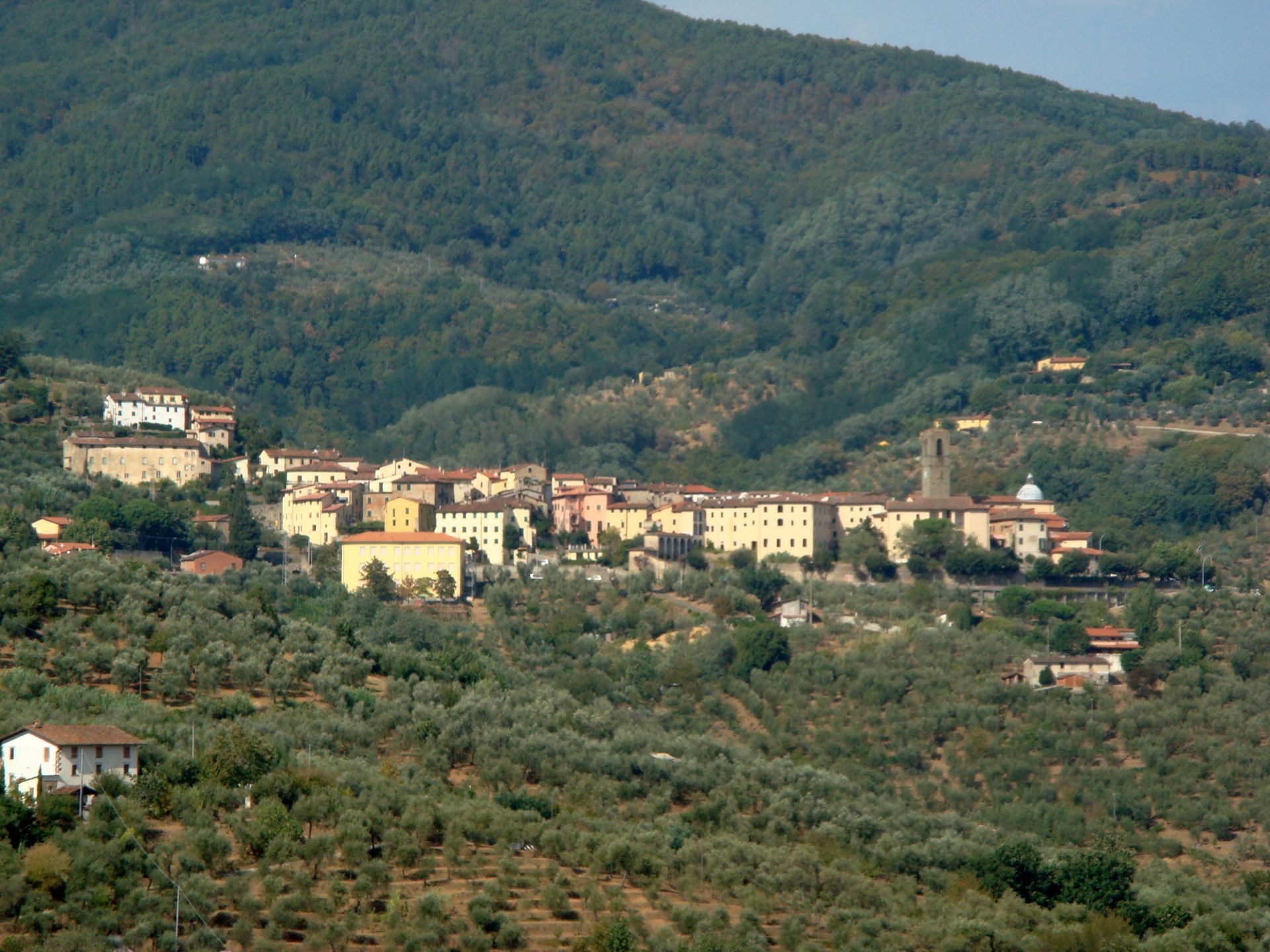
Titolo diapositiva
Scrivi qui la tua didascaliaPulsante
-
Massa
It is a true journey back to the Middle Ages when entering the castle of Massa. Like many Tuscan settlements of the medieval era, it is a village surrounded by walls, guarded by towers and accessible through ancient gates, with a fortress dominating the highest point.
The southern entrance is marked by the 14th-century Porta ai Campi, beyond which one reaches Piazza Cavour, overlooked by the Romanesque parish church of Santa Maria Assunta, rebuilt in the 17th century, and a wing of the imposing Monastery of the Visitation. Founded in 1683 as a female conservatory, it was transformed into a monastery in 1714 by initiative of Grand Duke Cosimo III de’ Medici. Next to the parish church stands the charming chapel of the Monastery, decorated in elegant 18th-century style.
From Piazza Cavour one proceeds along the main street of the village, lined with palaces and houses that still clearly show their medieval origins, until reaching Piazza Matteotti, the heart of the castle since its foundation. On the northern side rises the Loggia del Podestà, featuring numerous coats of arms carved on its walls, while opposite stands a refined noble palace that today houses the Municipal Historical Archive.
Continuing up the main street, which climbs steeply among increasingly ancient buildings, one arrives at the top of the village where – hidden among centuries-old olive trees – lie the remains of the medieval fortress, once a defensive stronghold and a symbol of seigneurial power.
The village of Massa, together with Cozzile, was for centuries a strategic point of the Valdinievole, being located on the border between Florentine and Lucchese territories. Already mentioned in documents of the 11th century, it first belonged to the Cadolingi family, then to the Counts Guidi, and later came under the protection of Florence. Historical events left a strong imprint on the urban structure, which still preserves its medieval fortified layout, the towers incorporated into the houses, and the characteristic gates of access.
The village is also rich in popular and religious traditions: particularly important are the celebrations dedicated to Santa Maria Assunta, patron saint of the village, which every year enliven the castle’s streets with liturgical ceremonies and popular festivities.
The cobbled alleys of Massa, the breathtaking views over the Valdinievole, and the tranquility of its olive groves offer an experience that combines history, art, and nature. Together with Cozzile, it forms the municipality of Massa e Cozzile, one of the most fascinating destinations in the lesser-known Tuscany, able to offer visitors timeless atmospheres and landscapes of rare beauty.
4/9/2025
Massa

Slide title
Scrivi qui la tua didascaliaButton
Slide title
Scrivi qui la tua didascaliaButton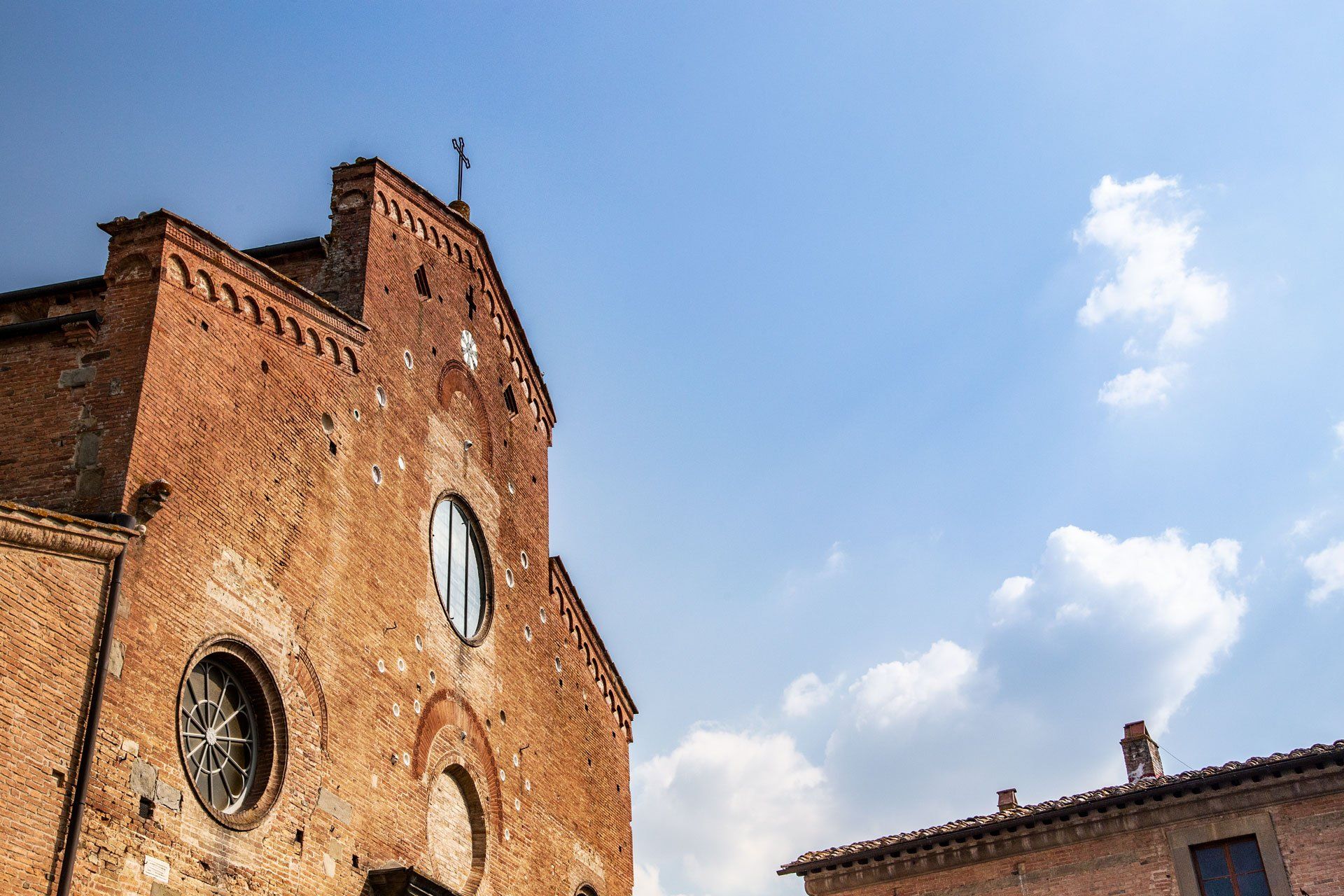
Slide title
Scrivi qui la tua didascaliaButton
Slide title
Scrivi qui la tua didascaliaButton
-
S. Miniato al Tedesco
San Miniato is located on a hill between Pisa and Florence. It is an important economic and industrial center of the leather district, but also a city of art and a slow food city. It is surrounded by a beautiful countryside, where you can still breathe in the old rustic culture, with thousands of ways which lead into woodlands that are centuries-old and ancient parish churches, where the ground hides another treasure of san Miniato: its white truffle.
The original nucleus of the town dates back to the 8th century, when according to the original document of 713, seventeenth Longboards built a Church dedicated to the martyr Miniato. Therefore the town has Germanic origins and since the Middle Ages it has been known as San Miniato al Tedesco (San Miniato to the German).
Otto I, Duke of Saxony in 962 made it become one of the centers of the imperial administration. Subsequently Frederik II, Duke of Swabia in 1218 built his castle in San Miniato and used it for tax collection purposes for central Italy. In 1622 it became a bishopric by building its own seminary not far from the Duomo, in the area then populated with houses and shops leaning against the walls.
After Frederick II, Napoleon also went to San Miniato: first to have the certificate of nobility of his family, necessary to access the French military academy, then during the Italian campaign to visit his uncle Filippo Bonaparte. The events of the Second World War left their mark on the city causing the destruction of part of the medieval buildings (including the Rocca di Federico, later rebuilt).
-
The truffle of S. Miniato
In the immaculate rustic hinterland, oaks, lime trees and willows host between their roots the finest mushrooms can be found: it is the White Truffle of the San Miniato hills. The Tuber Magnatum Pico, this is its scientific name, is always a source of wealth of our lands. For over a century San Miniato truffles go out during the night with their dogs and walk through hidden paths between the trees, trying to capture the minimum and weakest trace, so they can excavate and collect the precious tuber.
It is right in San Miniato that every year in November, the National White Truffle of San Miniato Festival takes place, which is a great showcase/market that attracts thousands of Italian and foreign visitors.
San Miniato al Tedesco A brief history
24/10/2025
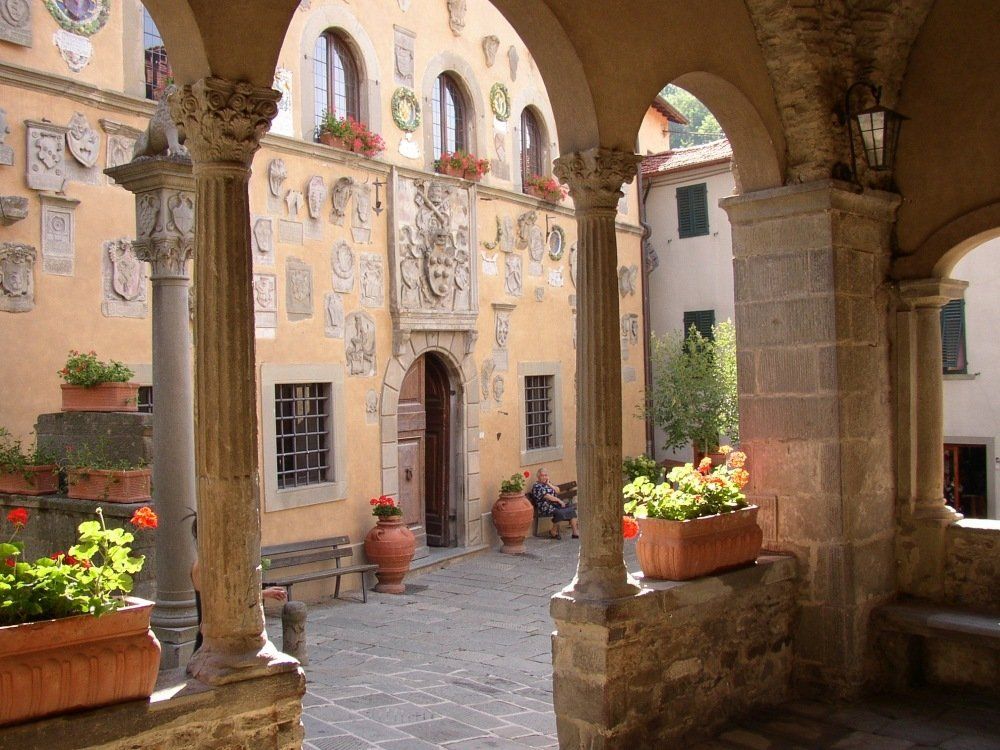
Titolo diapositiva
Scrivi qui la tua didascaliaPulsante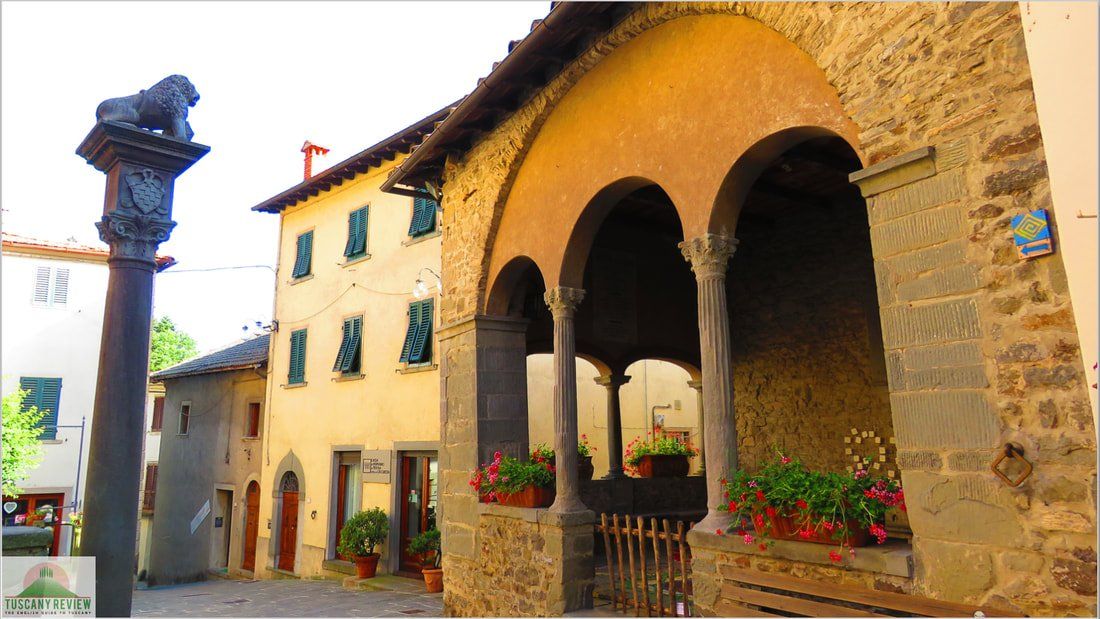
Titolo diapositiva
Scrivi qui la tua didascaliaPulsante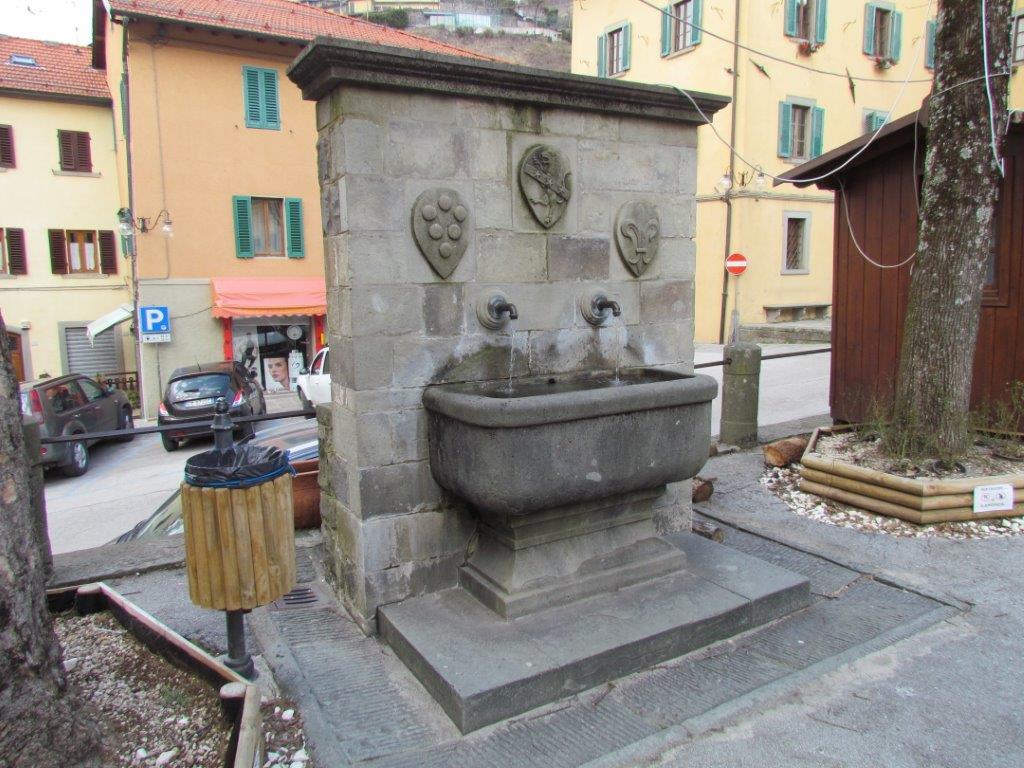
Titolo diapositiva
Scrivi qui la tua didascaliaPulsante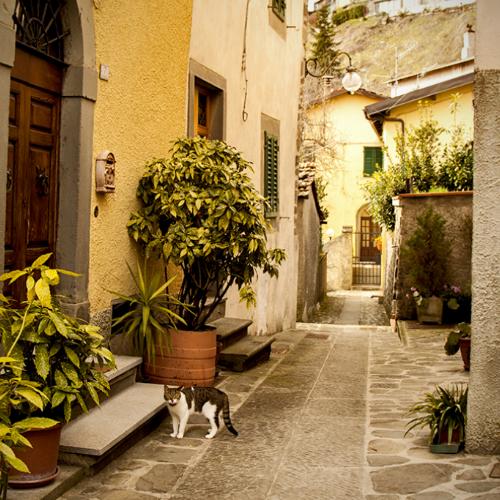
Titolo diapositiva
Scrivi qui la tua didascaliaPulsante
-
Cutigliano
Cutigliano is built along an important thoroughfare which was recorded in the Longobard era, and crossed the Croce
Arcana Pass to head north. Cutigliano developed after 1368 when it became the centre of the Pistoia mountain magistracy.
The town has typical narrow streets flanked with ancient buildings and monuments, and a flourishing summer tourist industry as well as a ski resort at Doganaccia on the Apennine ridge.
The focal point of the village is the Piazza del Municipio, overlooked by the Palazzo Pretorio, or Palazzo dei Capitani della Montagna, built in the late 14th century and extended in later centuries. The town's history is recorded on these ancient walls by the many coats—of arms in stone and multicoloured terracotta, representing the various Captains of the magistracy; while a large Medici coat—of—arms surmounted with the papal insignia of Leo X is situated above the entrance portal.
Another symbol of Florentine domination is the statue by Marzocco on the stone column in the square, which is a copy of the original sculpture preserved in the Renaissance arcade, another example of the beautiful architecture of the town which contains a 16th century fresco of the Madonna and Child. The sound of water running from the little stone fountain accompanies the visitor as far as the nearby church of Madonna di Piazza, in which another glazed terracotta
work by Benedetto Buglioni can be seen.
There are interesting examples of 17th century Florentine art in the church of San Bartolomeo just outside the town.
Cutigliano short history and description
24/10/2025
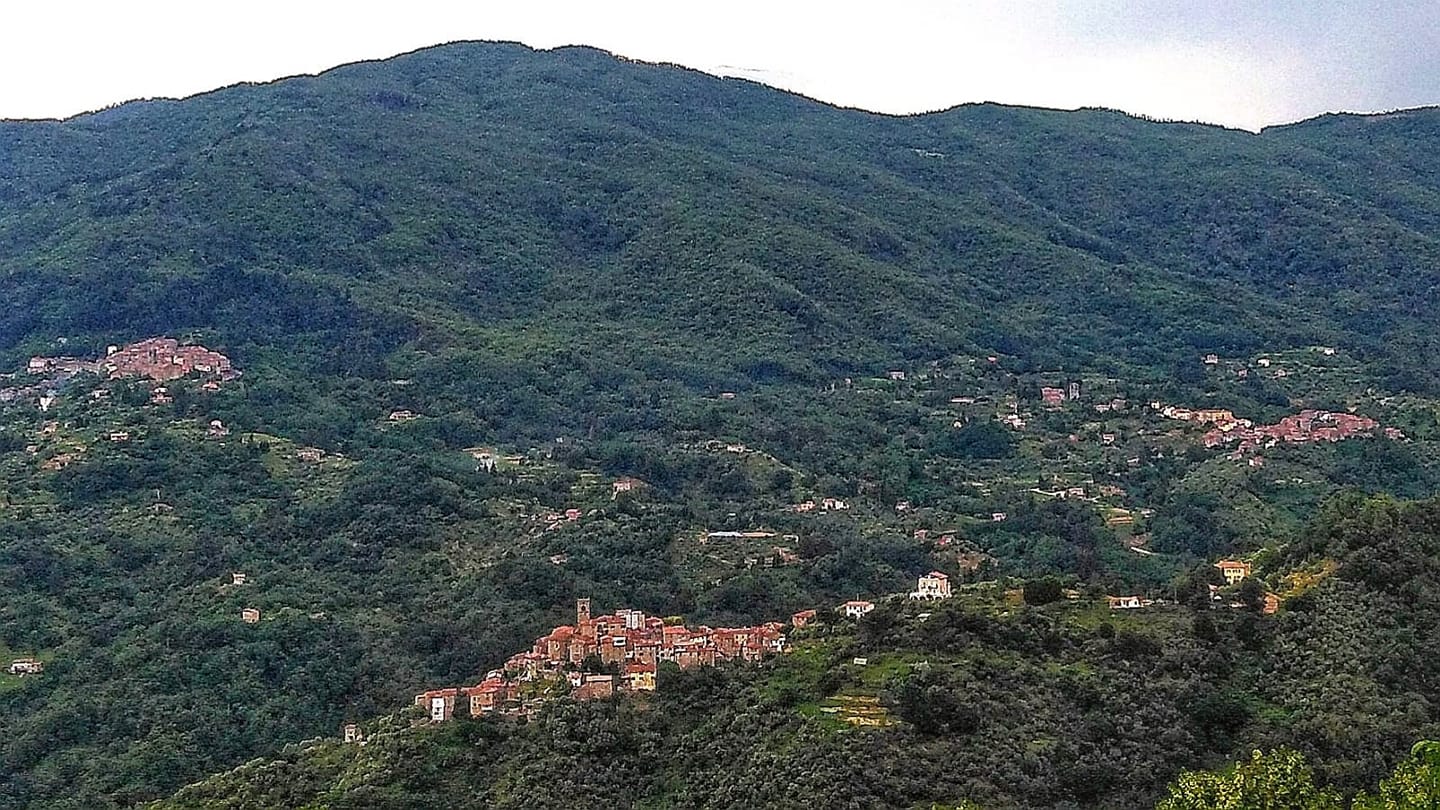
Titolo diapositiva
Scrivi qui la tua didascaliaPulsante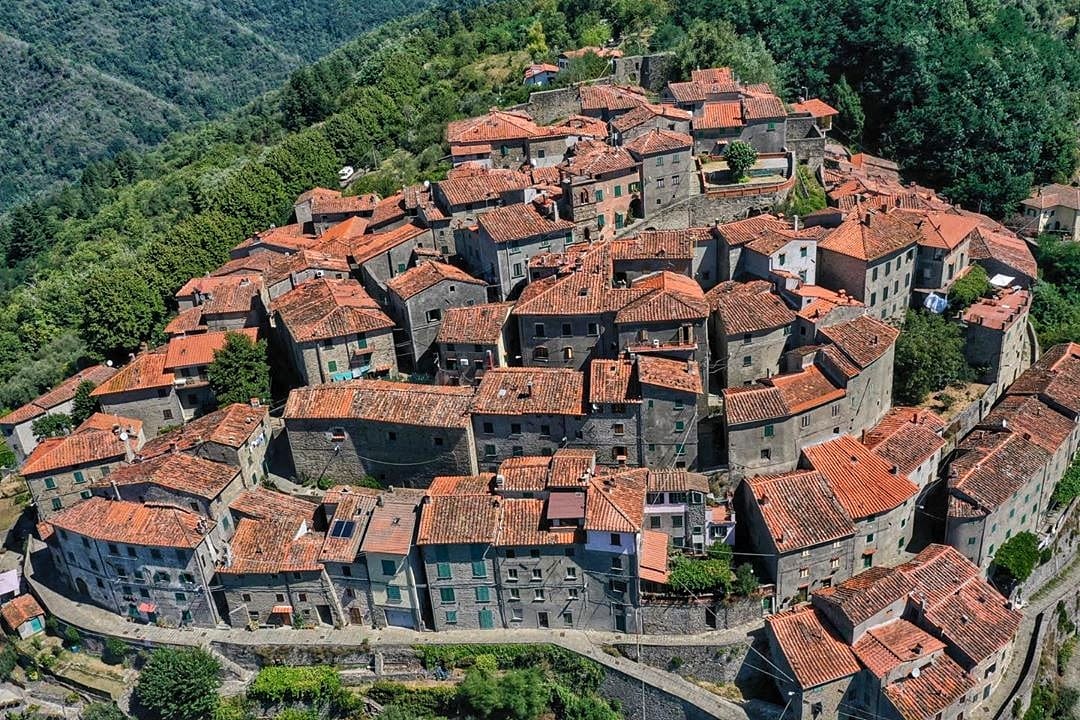
Titolo diapositiva
Scrivi qui la tua didascaliaPulsante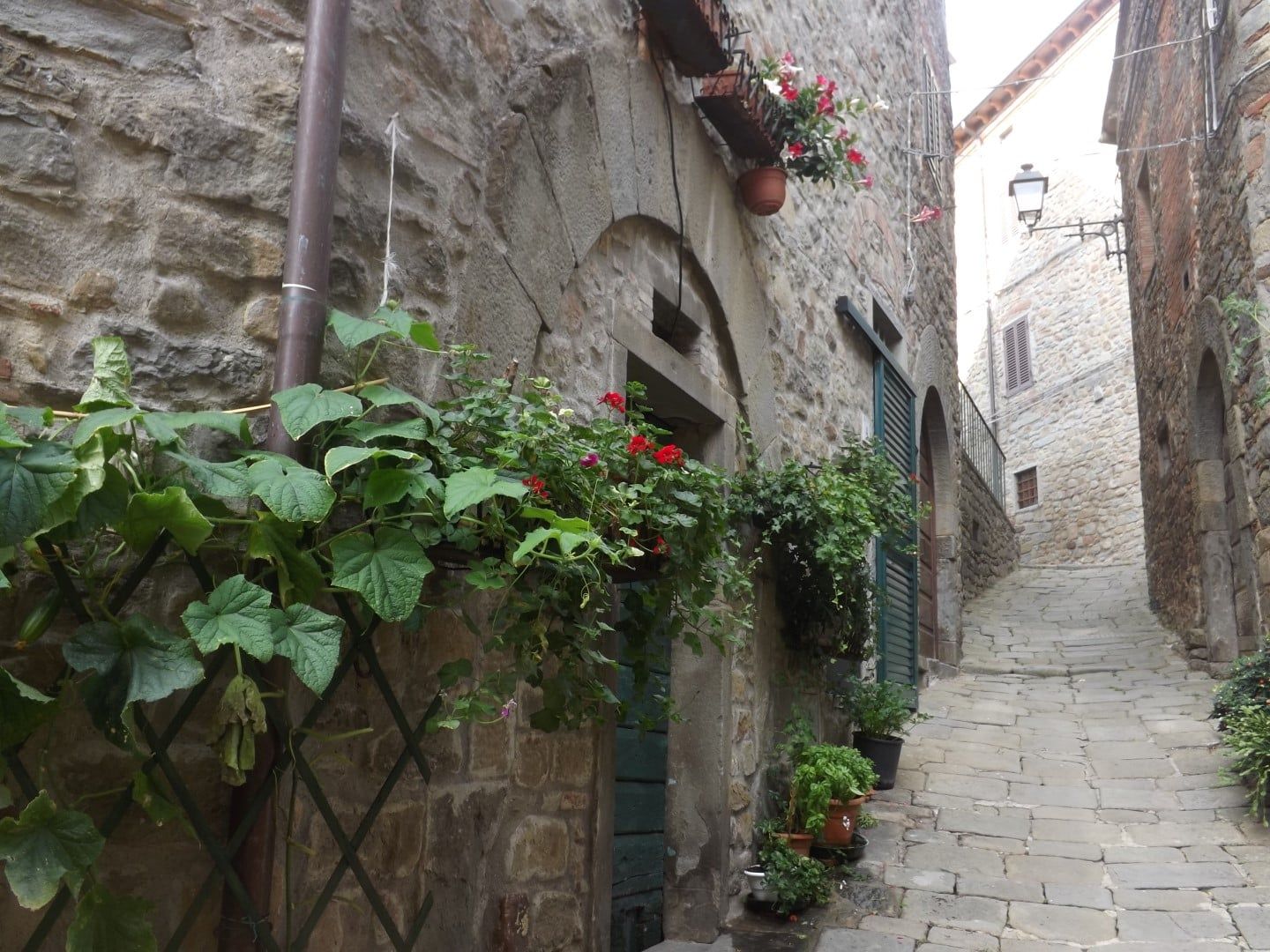
Titolo diapositiva
Scrivi qui la tua didascaliaPulsante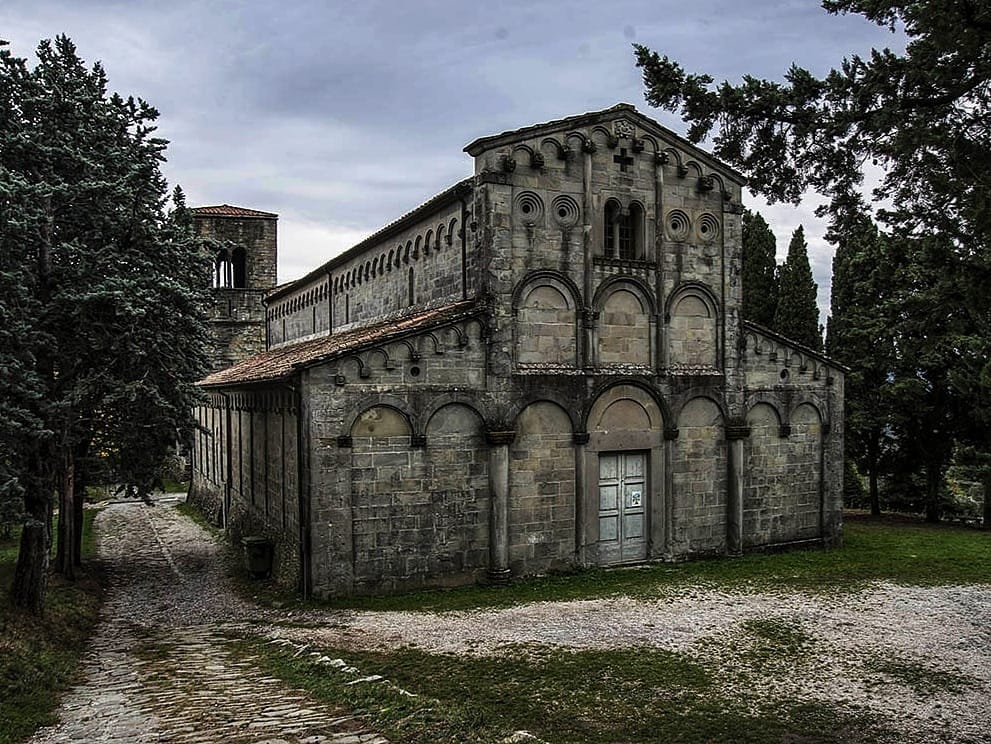
Titolo diapositiva
Scrivi qui la tua didascaliaPulsante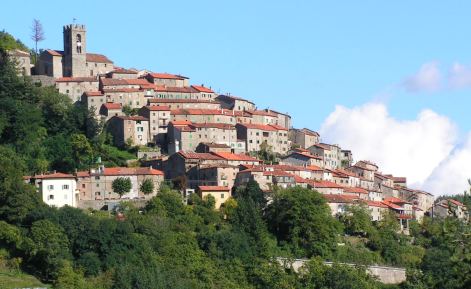
Titolo diapositiva
Scrivi qui la tua didascaliaPulsante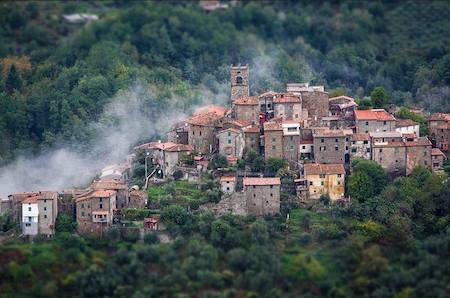
Titolo diapositiva
Scrivi qui la tua didascaliaPulsante
-
La Svizzera Pesciatina - The Little Switzerland of Pescia
A few steps from the noteworthy Collodi (where Pinocchio’s lies still enchant grownups and kids alike), there’s a mountain area called the Svizzera Pesciatina (Little Switzerland of Pescia). This curious nickname was given by Jean Charles Sismondi, a historian, writer and economist born in Geneva but of Italian origin. After travelling a lot around Europe, he fell in love with this area and retired here, an area that used to remind him of his beloved Switzerland.
This zone, which can be considered both a mountain and hilly place due to its particular features, is studded with little villages known as “The 10 Castella” (The Ten Castles), all made in pietra serena stone which was of great importance during the Middle Ages.
Whoever drops by they will surely stop astonished and admire the great, green valley lying under their eyes, whose colours and breathtaking views remind one of the alpine mountains bordering Italy on the north.
This area offers a sweeping panorama that rolls over gentle hills, rich with springs, mantled with olive groves and chestnut woods, oak trees and acacias. Once you plunge into this untouched nature, you can walk along the winding roads of the “Antiche Castella” (ancient walled hamlets) which played a strategic role in the past since they were located at the border between the domains of Lucca and Florence. Each of them is worth a visit, as they all have a tale of their own to unveil: from Pietrabuona, proceeding upward along the Pescia torrent, to Vellano, Medicina, Aramo, Fibbialla, Sorana, S. Quirico, Castelvecchio, Stiappa, up to Pontito, which soars 750 above sea level.
Our journey begins in Pietrabuona, considered the gateway to the Svizzera Pesciatina and the first of the famous dieci castella—the ten medieval villages that dot this enchanting valley. The very name "Pietrabuona" tells its story: the area is rich in pietra serena, a precious sandstone used in the construction of many churches and houses in the region. Not to be missed in the village are the fortress overlooking the town and the fascinating Paper Museum, which tells the story of one of the area’s oldest traditions, thanks to paper mills active since centuries past.
Continuing along the scenic municipal road that loops perfectly through the Valleriana, we reach Medicina, a charming and compact village that holds a significant fragment of history: in August 1529, Francesco Ferrucci, a valiant captain of the Florentine Republic, spent the night here with his army on his way to Gavinana, where he would later fall in battle against the imperial troops.
Just a short distance away is Fibbialla, which developed around the Church of San Michele, dating back to the 15th century. The village is surrounded by vineyards and chestnut groves, reflecting the agricultural and peaceful soul of the land.
We then arrive at Aramo, a striking village built atop a rocky outcrop, offering sweeping views of the valley. Here stands the Church of San Frediano, bishop of Lucca. Beneath the village lie medieval tunnels, once used as escape routes during sieges. Next to the parish church is the charming Oratory of the Nativity of Mary, a quiet, evocative spot for those who love ancient places.
The path continues to San Quirico, perhaps the most scenic of all the villages in the Valleriana. After parking just below the town, one ascends on foot through a maze of alleys, arches, blooming pergolas, and covered passageways. The well-kept historic center leads to a square at the top of the village, featuring a stone fountain and a panoramic terrace offering stunning views over the surrounding hills. San Quirico preserves its medieval layout, with the Church of Saints Andrew and Lucy, home to a beautiful baptismal font and a pulpit carved in pietra serena.
From here we head to Castelvecchio, where a longer stop is a must. Perched above the valley, this village houses the most important monument of the Svizzera Pesciatina: the Parish Church of Saints Ansano and Thomas, dating back to the 10th century and declared a national monument. The façade is in Lombard Romanesque style, though partially rebuilt after a collapse in the 19th century. Beneath the presbytery lies a crypt, and outside stands a solitary bell tower. On the exterior walls, fascinating bas-reliefs, possibly of Lombard origin, depict monstrous animals and a mysterious figure—some say Christ, others a praying figure—believed by some to suggest Templar presence in the area. Also worth visiting is the Oratory of the Holy Rosary, adorned with 17th-century frescoes of the Virgin and Christ. Before leaving, don’t miss a relaxing break on the terrace of the bar next to the small grocery store—offering breathtaking views of the valley.
Crossing the Pescia River, we arrive in Sorana, a village nestled on the slopes of Mount Peritulo. Its name derives from the ancient Rocca Sovrana, once dominant over the valley and now reduced to ruins. Sorana is renowned throughout Tuscany (and beyond) for its beans, a delicacy with a delicate flavor and a certified Slow Food product. Strolling through the village, you reach the central square, dominated by the Church of Saints Peter and Paul.
From Sorana, we briefly return to Castelvecchio to complete the visit to the Oratory of the Holy Rosary, recently restored and fully decorated by local 16th-century painters—a true artistic gem.
Our journey then ascends to Stiappa, located at 627 meters above sea level. For centuries, this village marked the border between the Grand Duchy of Tuscany and the Duchy of Lucca. Its medieval layout features narrow streets leading to the summit, where stands the Church of Santa Maria Assunta. The houses are built like a wall, giving the village a unique defensive character that captures every visitor's curiosity.
Even higher, at 750 meters above sea level, lies Pontito, the highest and perhaps most fascinating village of the Valleriana. Its name, Pons Titi, dates back to an ancient Roman bridge built under Emperor Titus Augustus. Pontito boasts a fan-shaped layout, expanding from the hilltop down to its base, with the Church of Saints Andrew and Lucy crowning the summit. Once fortified, the village still retains many medieval features: arches, defensive gates, narrow alleys, and timeless views. It is also the birthplace of Lazzaro Papi, historian and scholar, and remains one of the most authentic and charming jewels of the area.
The final stop of our journey is Vellano, the ancient Avellanum, capital of the Valleriana and a crossroads between Pescia and the Abetone mountains. Perched in an amphitheater shape on a hill, Vellano is instantly recognizable for its semicircular form and its iconic bell tower. Once a fief of the noble Garzoni family, who also owned the famous Villa Garzoni in Collodi, Vellano’s municipal statute was drawn up in 1366 by Coluccio Salutati, a renowned chancellor of the Florentine Republic. Today, the village is best known for its pietra serena quarries, once numerous, now reduced to a single high-quality quarry producing less porous and more weather-resistant stone. Vellano also boasts a 10th-century Romanesque parish church.
-
The Sorana IPG Bean
The ancient Fortress of Sorana dominates its strategic position that leads into the valleys formed by the two branches of the Pescia River. Famous for its iron foundries and paper mills, it played a key role as a rest station during the times when the hillside villages were connected only by steep, almost impassable mule-tracks. Today, its name is associated with one of the most exquisite products of local gastronomy: the famous Sorana IGP bean, cultivated on the dry bed of the Pescia torrent and renowned worldwide for the unparalleled taste and the delicacy of its skin (many people, in fact, call it “the bean without skin”): once boiled, pulp and skin become as one and the latter can hardly be tasted. I strongly suggest you try some with extra-virgin olive oil dressing, you’ll certainly lick your chops and...mop up the dressing on your plate with bread, just like we Italians usually do.
If you would like to taste the exquisite and genuine local cuisine, the realm of the delicate crock-baked Sorana IGP beans is the Trattoria da Sandrino in Sorana.
The Swiss Pescia, short history, the 10 Castella
24/8/2025

Titolo diapositiva
Scrivi qui la tua didascaliaPulsante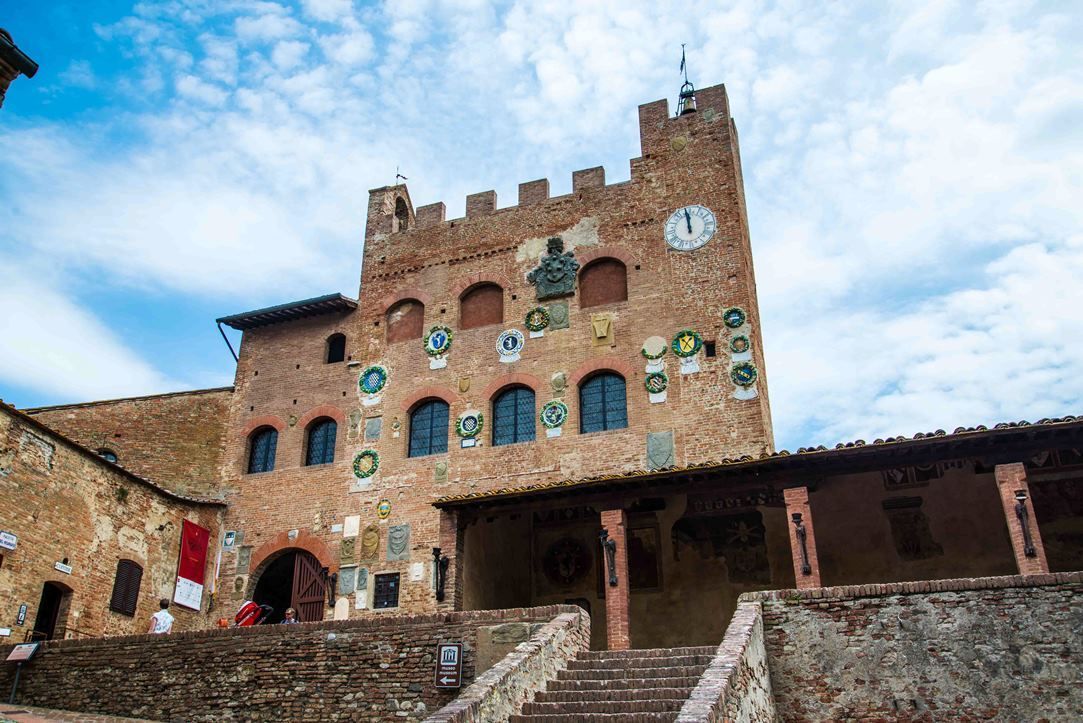
Titolo diapositiva
Scrivi qui la tua didascaliaPulsante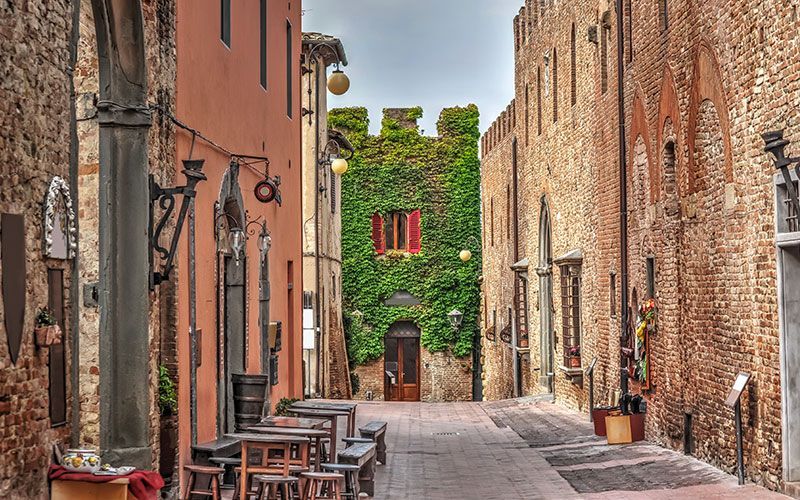
Titolo diapositiva
Scrivi qui la tua didascaliaPulsante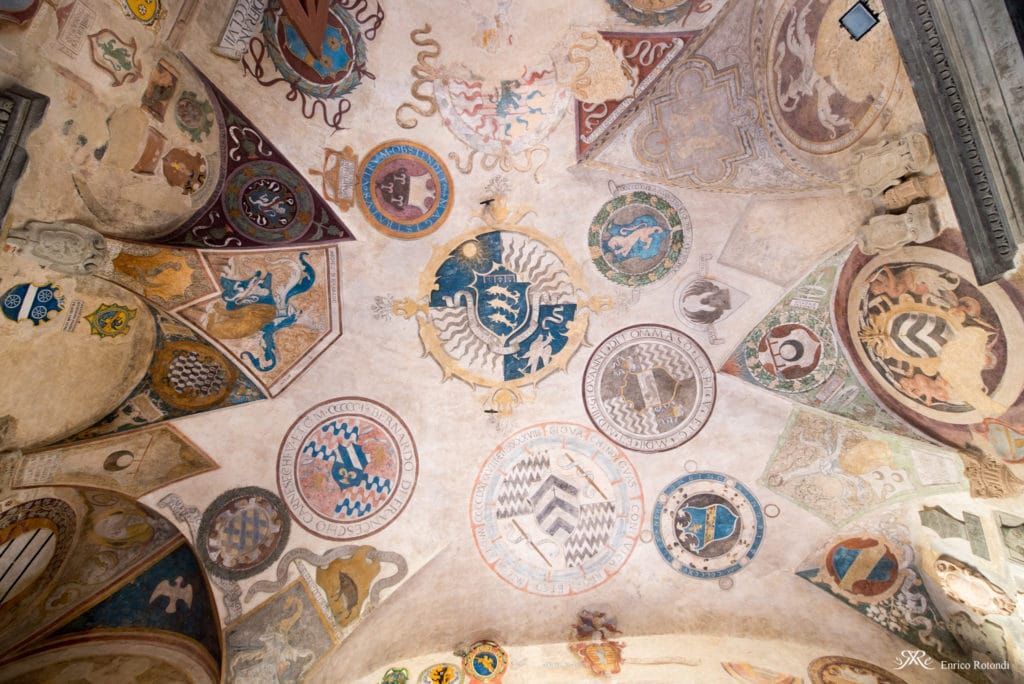
Titolo diapositiva
Scrivi qui la tua didascaliaPulsante
-
Certaldo
We can admire two aspects of Certaldo: the ancient original centre, which stands on the hill (Certaldo Alto or the Castle) preserving perfectly the medieval and Renaissance structures; and the modern aspect of the urban and industrial unit (the Borgo), which has developed in the plain, in these last two centuries.
The origins of Certaldo, as some discoveries in the territory testify, date back to the Etuscan-Roman period. Its name derives from the Latin "cerrus alto" (or from the German "cerrus aldo") with the meaning of high ground covered with cerris (trees)".
Its history has dated back to 1164, when Federico il Barbarossa, gave the territory to the Earls of Alberti family who had control over it till the end of 1200.
Certaldo, subdued to the Republic of Florence had become the seat of Vicariate since 1415, so even in the Medicean period it was the most important political and judicial centre in Valdelsa.
Certaldo Alto, the country of Giovanni Boccaccio (1313-1375) - one of the Fathers of Italian Language- preserves the house and the grave of the story-writer. We can see his grave in the church of SS. Jacopo e Filippo, while his house, a tower and a loggia rebuilt after the second world-war, is nowadays the seat of the National Centre of Studies about Boccaccio with a rich library.
The "Castle", the ancient village, is surrounded by the walls - largely well kept - on which you can admire the Gate of Alberti, the Gate to the Sun and the Gate to Rivellino. You can arrive there climbing up the most ancient and fascinating steep ascents, called "Costa Alberti" and "Costa Vecchia" or the most modern ascent "of the Castle". The scenery, which presents itself to your eyes, is a rare example of town-planning characterized by a medieval style.
The Palazzo Pretorio built on the highest and oldest part of the Certaldo Alto hill, is located at the end of Via Boccaccio, the main street of the village.
It has a brick facade studded with stone, glazed terracotta and frescoed coats of arms of the most important Florentine families. It was built in the twelfth century by the Alberti Counts, and from the fifteenth century it became the seat of the Vicariate of Valdelsa and therefore a place to administrate justice.
The visit to the Palace starts from the Knight's Chamber, where the first investigations of the trials were held and where the significant motto “LISTEN TO THE OTHER PART AND BELIEVE VERY LITTLE” is written, and continues with the Audience Hall, the Civil Prison, the Criminal Prisons and the Chapel where the condemned spent their last night in prayer. Upstairs you can see the private apartments and the splendid Sala del Vicario which was frescoed at the end of the 15th century by Pier Francesco Fiorentino, while in the nearby church of San Tommaso and Prospero, the Tabernacle of the Justice (1464-65), a masterpiece by Benozzo Gozzoli which was originally located on the banks of the Agliena river, along the road to the gallows, where the condemned to death were brought for a last prayer.
Finally, it should be mentioned the original Japanese garden created in the courtyard of the palace by the artist Hidetoshi Nagasawa in which a typical Japanese tea house was also rebuilt.
Further architectures of artistic and historical interest are even the high-class houses of the Castle area, the embattled Stiozzi-Ridolfi Palace (XIV century) and Giannozzi Palace, which face each other along via Boccaccio, where you can also see the "Tower-house" of Machiavelli Palace and the austere church of SS. Jacopo e Filippo (XIII century), which has got a fresco of XIV century and very fine glazed terracotta tabernacles by Della Robbia Workshop.
From the church you can go to the cell of Blessed Giulia (1319-1367), a character, whose life, as a cloistered nun, gave rise to fascinating legends, and to the adjacent convent of the Augustinian Fathers, which has got a particularly suggestive Romanesque cloister.
-
The onion of Certaldo
Certaldo, the city of Boccaccio, is famous not only for its renowned writer but also for another exceptional protagonist: the onion. This precious vegetable is so important to the city's identity that it even appears on the municipal coat of arms, along with the motto: "By nature, I am strong and still sweet, and I please those who stay and those who work." This is not just a tribute to the onion, but also to the character of the people of Certaldo, who, like the onion, are sweet yet strong.
The fame of the Certaldo onion dates back to 1100 when the Counts Alberti, the local feudal lords, helped make it a symbol of the area. Boccaccio himself, in his Decameron, mentions the renowned Certaldo onion, which was already famous throughout Tuscany during the Middle Ages. The fertile soil surrounding Certaldo has always favored its cultivation, giving it a tender texture and a unique flavor that sets it apart from other varieties.
Today, in an era of agricultural and dietary change, the Certaldo onion has been revived thanks to the efforts of Slow Food and the Tuscany Region, which have supported its production, protecting it as one of the typical products of Tuscany's rich culinary tradition.
There are two main varieties of Certaldo onion. The Vernina, grown in winter, is distinguished by its deep red color and flattened shape, with a strong, pungent flavor. The Statina, on the other hand, is grown in summer, with a more rounded shape, a violet hue, and a milder taste, ideal for eating raw.
The Certaldo onion is an incredibly versatile ingredient in the kitchen, used in everything from appetizers to desserts. Among the traditional dishes where it shines are "francesina" (stewed beef leftovers), soups, and the delicious onion cream. The cream is made by gently sautéing onions in hot oil, adding a bit of vegetable broth and potatoes, then serving it with Tuscan bread croutons. The result is a delicate yet flavorful dish that represents the authenticity of Tuscan cuisine.
More than just a unique gastronomic resource, the Certaldo onion represents a deep connection to the land and its farming traditions, making it not only an agricultural product but also a symbol of local culture.
Certaldo, brief history and what to see
19/8/2025
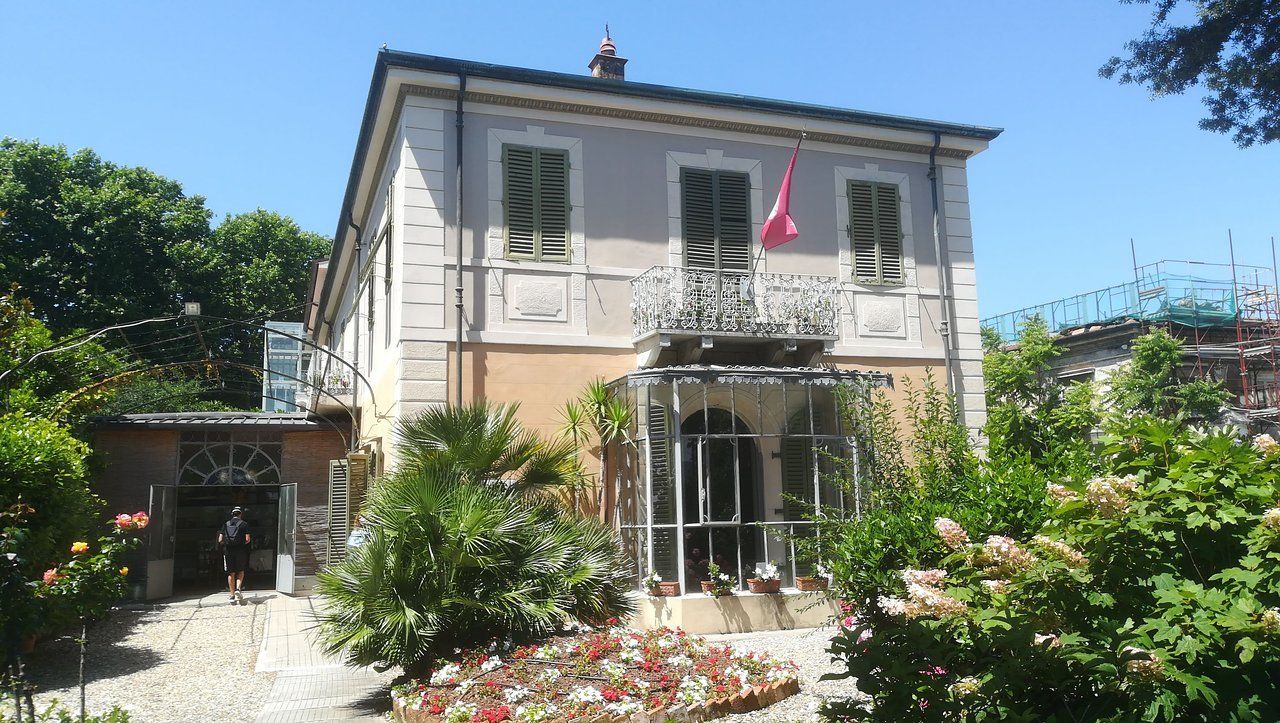
Titolo diapositiva
Scrivi qui la tua didascaliaPulsante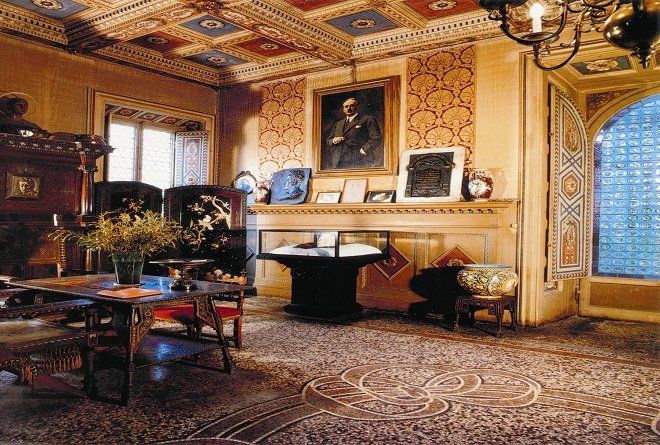
Titolo diapositiva
Scrivi qui la tua didascaliaPulsante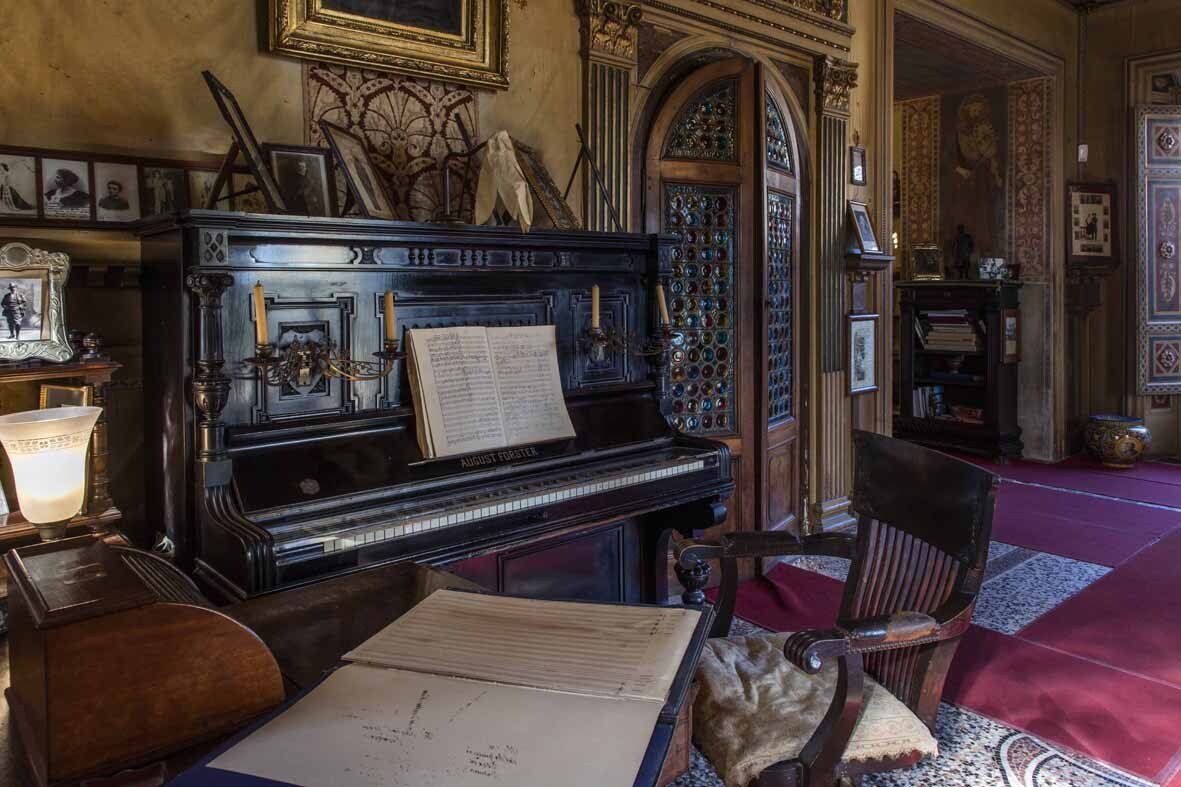
Titolo diapositiva
Scrivi qui la tua didascaliaPulsante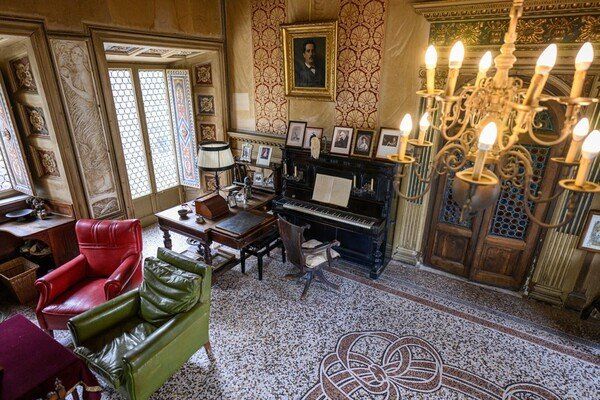
Titolo diapositiva
Scrivi qui la tua didascaliaPulsante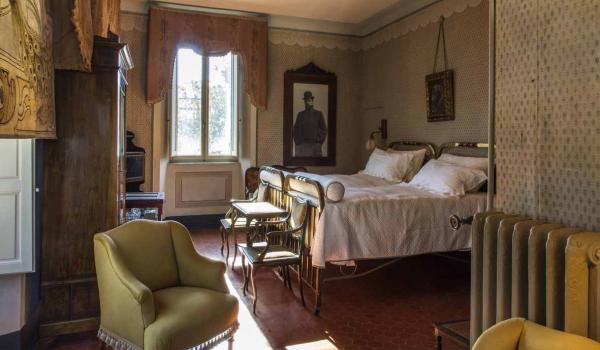
Titolo diapositiva
Scrivi qui la tua didascaliaPulsante
-
Torre del Lago - Villa Puccini
Giacomo Puccini first came to Torre del Lago in June 1891. For several years he rented various houses in the village, but when his means permitted - after the success of Manon Lescaut (1893) and La Bohème ( 1896) — he bought the present dwelling (fomerly an old watch-tower on the Archducal estate, which he set about having completely restored). At around the same time Puccini obtained permission from the Marquis Carlo Ginori, owner of Lake Massaciuccoli, to fill in that part of the lake in front of the villa so that a garden could be established, and a road constructed beyond the front fence. The elegant and sober house was equipped with all the latest fittings, from radiator heaters to the telephone. Puccini loved living at Torre del Lago, where he was able to go hunting and also enjoy the peace and quiet so essential for his work. It was at Torre del Lago that the composer wrote the majority of his operas: Manon Lescaut, La Bohème, Tosca, Madama Butterfly, la Fanciulla del West, La Rondine and Il Trittico.
The Maestro did most of his composing at night. Whenever he could, he went hunting; this pastime was particularly well catered for given the ideal location of the house. Puccini kept his boats moored in front of the railings; the lake and the marshes were the undisputed dominion of the composer and his hunting companions.
The Puccinis lived the simple life of an average middle-class family; the house was visited by people of all social conditions.
The fishermen and hunters of Torre del Lago were constant companions of the Maestro, as were those painters who lived in the vicinity. The Italian poet Giovanni Pascoli also numbered amongst Puccini‘s friends.
In 1921 Puccini left Torre del Lago for Viareggio, and there moved into a villa which he had had specially built for him; the composer continued to live in Viareggio until 1924, the year of his death.
When Puccini died, his only son Antonio had a chapel constructed inside the villa at Torre del Lago. On 29 November 1926 Puccini‘s remains were brought to the chapel and interred there.
Subsequently Elvira, Antonio and Rita Puccini were also laid to rest in the Torre del Lago chapel.
In the Villa Museum Puccini one can visit the family living room and Puccini‘s study with the composer's Förster piano and, nearby, the special work table upon which his spectacles and other personal effects are still lo be seen. A glass cabinet contains Puccini‘s death mask, which was prepared in Brussels immediately following the death of the composer. Furthermore one can admire various manuscripts - among them some of the last notes written by Puccini in Brussels following his operation -, reproductions of some of his letters, facsimile of pages taken from early musical scores in addition to photographs of the earliest interpreters of Puccini’s operas and historic dignitaries with whom Puccini was acquainted.
The chapel created from an existing small family room, houses the tomb of Giacomo Puccini and those of members of his immediate family.
Recently after an accurate renovation, also the Bedroom of Giacomo and Elvira Puccini returned accessible to the public with the original look from 1905, when the Maestro himself renewed furnishings inspired by the green, the lake and the lush vegetation surrounding the residence. The big brass bed, the closet, the dresser, the desk and the whole furniture have traveled back in time, to the point that by crossing the threshold of the room just restored, any visitor has the feeling of traveling back to the early ’900 when the composer was at the height of his activity while the notes of his famous Operas resounded in the house.
In Puccini’s time the lake came up to the fence, and the present-day piazza did not exist. The garden today still maintains the appearance it originally had when the Maestro was alive.
At that time one could listen to the singing of numerous birds housed in aviaries.
Timetable
Admission every 40 minutes. Last admission 40 minutes before closing time.
November: OPEN ONLY on Saturday and Sunday from 10:00 a.m. to 12:40 p.m. (last admission 12:00) – from 2:00 p.m. to 5:20 p.m. (last admission 4:40 p.m.).
December 1st to January 31st: from 10:00 a.m. to 12:40 p.m. (last admission 12:00) – from 2:00 p.m. to 5:20 p.m. (last admission 4:40 p.m.).
February 1st to March 31st: from 10:00 a.m. to 12:40 p.m. (last admission 12:00) – from 2:30 p.m. to 5:50 p.m. (last admission 5:10 p.m.).
April 1st to October 31st: from 10:00 a.m. to 12:40 p.m. (last admission 12:00) – from 3:00 p.m. to 6:20 p.m. (last admission 5:50 p.m.).
On the days of the Puccini Festival (July and August): from 10:00 a.m. to 12:40 p.m. (last admission 12:00) – from 4:00 p.m. to 8:40 p.m. (last admission 8:00).
Closed
Monday morning (excluding period from June 1st to September 30th), December 25 (Christmas)
“Puccini Concealed” Tour
Ground floor and first floor.
Monday : 10:00 a.m. to 12:40 p.m. (last admission 12:00) – and
Thursday & Sunday: 2.00 p.m. to 4.40 p.m. (last admission 4:00 p.m.).
Prices
– Full admission: € 7.00 – Adults and Teenagers over 13
– Reduced admission: € 3.00 – Children from 6 to 13 yrs old
– Groups (minimum 15 people): € 6.00, only by prior reservation
– Free: Children under 6 yrs old
Puccini Concealed: Visit to the ground floor & first floor
– Full admission: € 7.00 – Adults and Teen-agers over 13
– Reduced admission: € 3.00 – Children from 6 up to 13 yrs old
Available Services
– Audio guides in Italian, English, German, and French
– Multilingual brochure
Dogs allowed inside the museum carried in the arms of the owners and/or tied up in the museum’s garden
Torre del Lago - Villa Puccini- Short description, entrance times and Tickets
26/10/2025

Titolo diapositiva
Scrivi qui la tua didascaliaPulsante
-
Monteriggioni: the enchanted village
Monteriggioni: the enchanted village that preserves the medieval soul of Tuscany
Along the highway leading to Siena, a place suddenly appears that seems to suspend time: Monteriggioni, a true medieval jewel rising like a crown of stone among the gentle hills of the Sienese countryside.
From afar, its famous and perfectly preserved city walls immediately catch the eye. Eleven of the original fifteen towers still stand tall, like silent sentinels of a glorious past. The remaining four, although reduced to the height of the walls, are still clearly visible, bearing witness to the village's ancient defensive function.
Visitors can park at the base of the hill and walk up to the historic center, small yet remarkably charming. The first impression is powerful: walking along the ramparts offers breathtaking views over the surrounding valley, while every stone seems to whisper centuries of history.
The heart of the village
Monteriggioni is still entered today as it was centuries ago: through one of its two historic gates, Porta Franca (facing Siena) and Porta Fiorentina (facing Florence). The latter, overlooking the countryside, offers an unparalleled view; the former leads straight into Piazza Roma, the main square, which was unpaved until the 1970s.
Facing the square is the Church of Santa Maria Assunta, a small but fascinating Romanesque building, accompanied by a massive bell tower built in a later period. A few steps away, a small history museum displays medieval armor and objects, immersing visitors in the atmosphere of the past.
A journey through time... and taste
Strolling through the narrow backstreets of Monteriggioni is an experience to savor slowly: among artisan workshops, historic taverns, the scents of Tuscan cuisine, and stunning views, the village offers a total immersion into the past. Despite its small size, Monteriggioni is lively, welcoming, and authentic.
Its territory extends well beyond the walls, including numerous hamlets and a community of about 10,000 inhabitants, maintaining a perfect balance between historical memory and contemporary life.
From history... to pop culture.
With its untouched beauty, Monteriggioni has also captivated the worlds of cinema and pop culture. Renowned directors such as Franco Zeffirelli, Mario Monicelli, and Bernardo Bertolucci have chosen it as a film location. Scenes from Ridley Scott’s Gladiator were filmed here.
But international fame has also come through the world of video games: two chapters of the iconic series Assassin’s Creed are set within Monteriggioni’s walls, introducing millions of fans around the world to its timeless charm.
Monteriggioni: the enchanted village
26/8/2025



